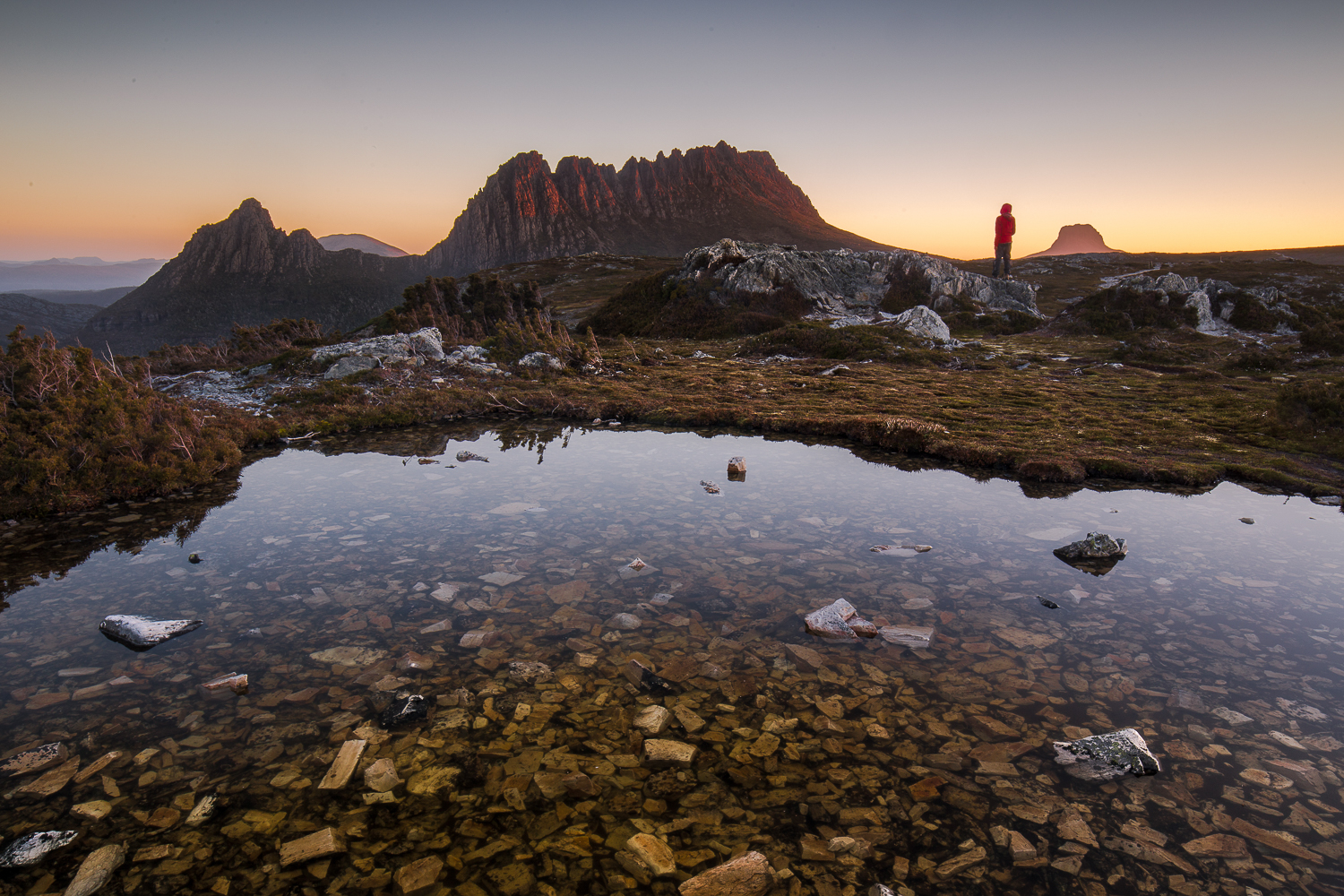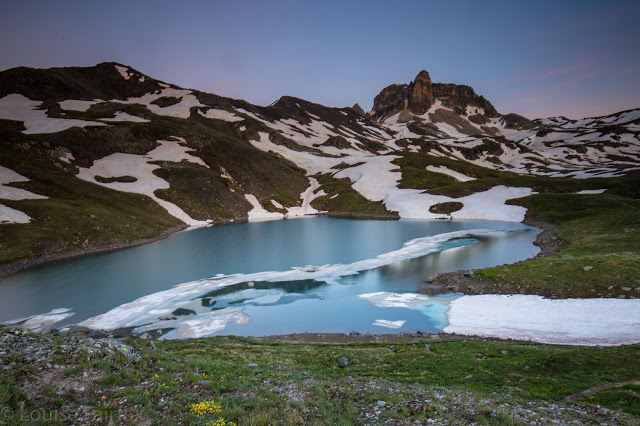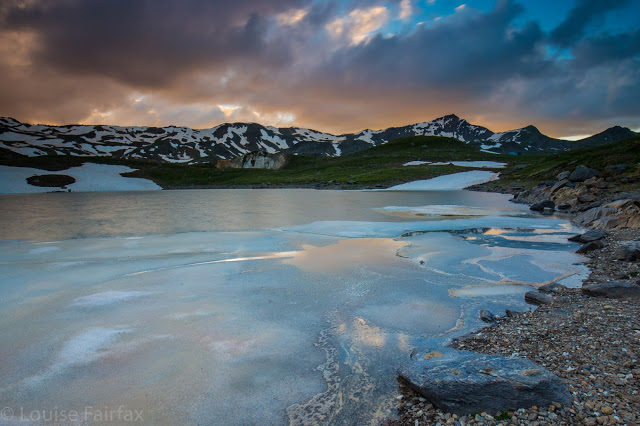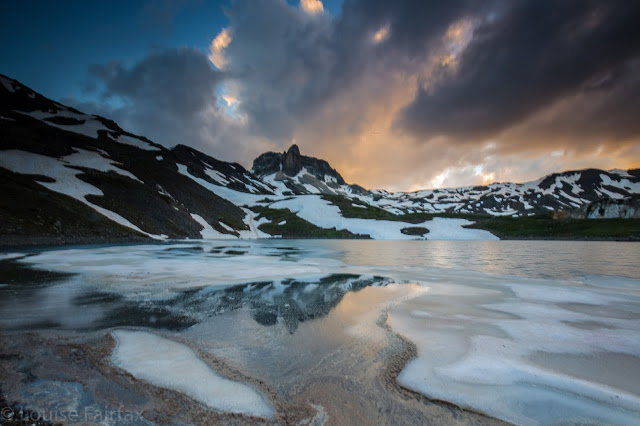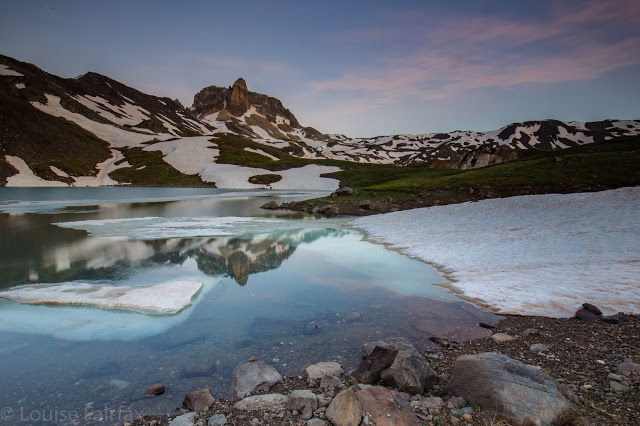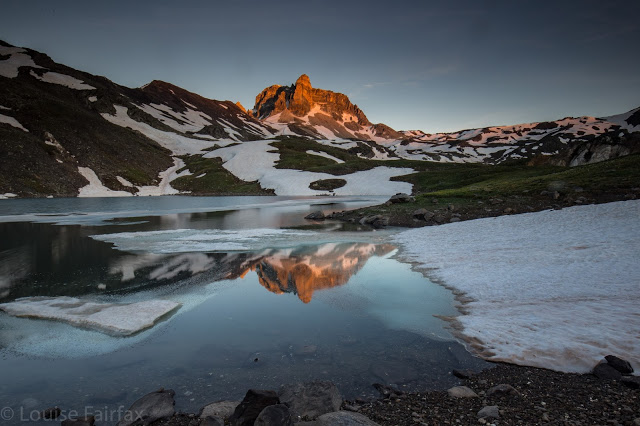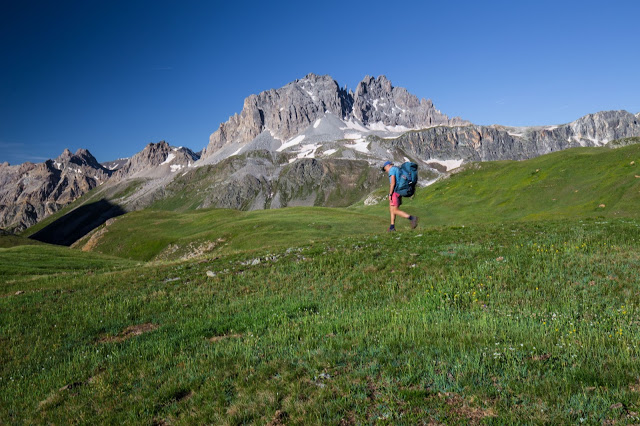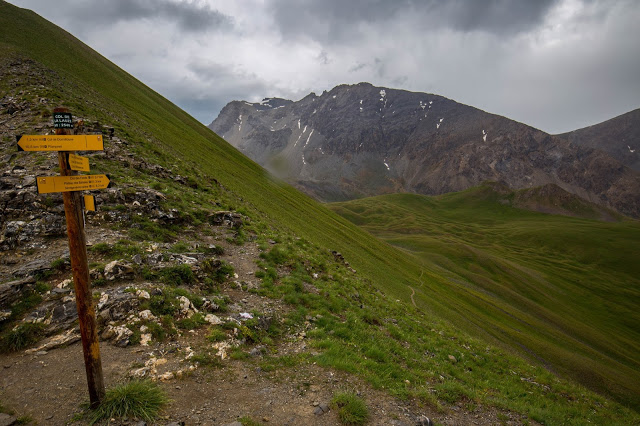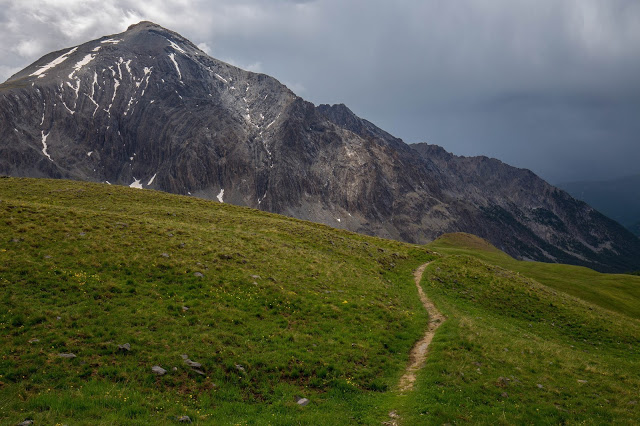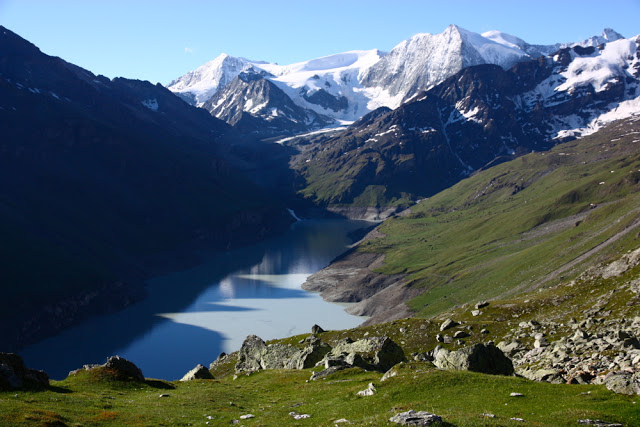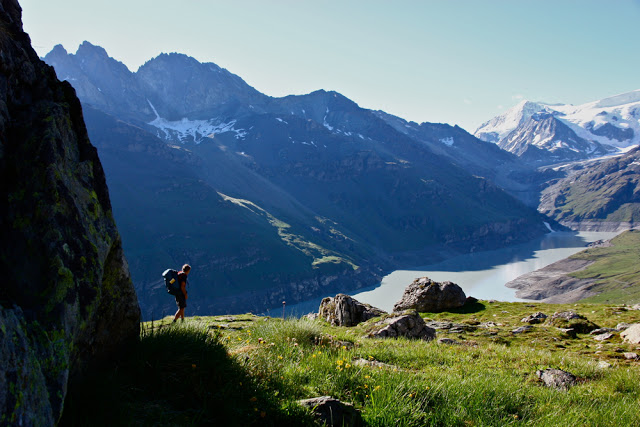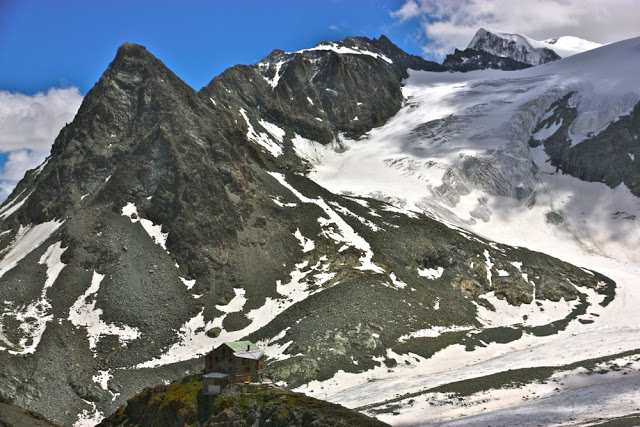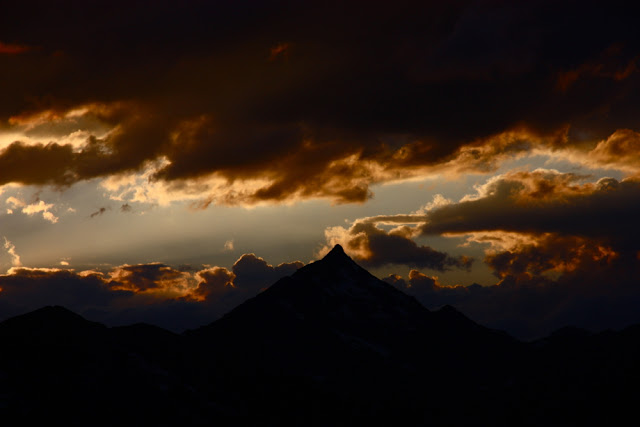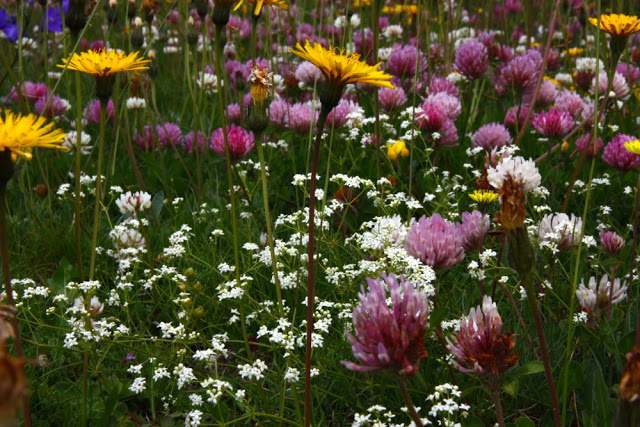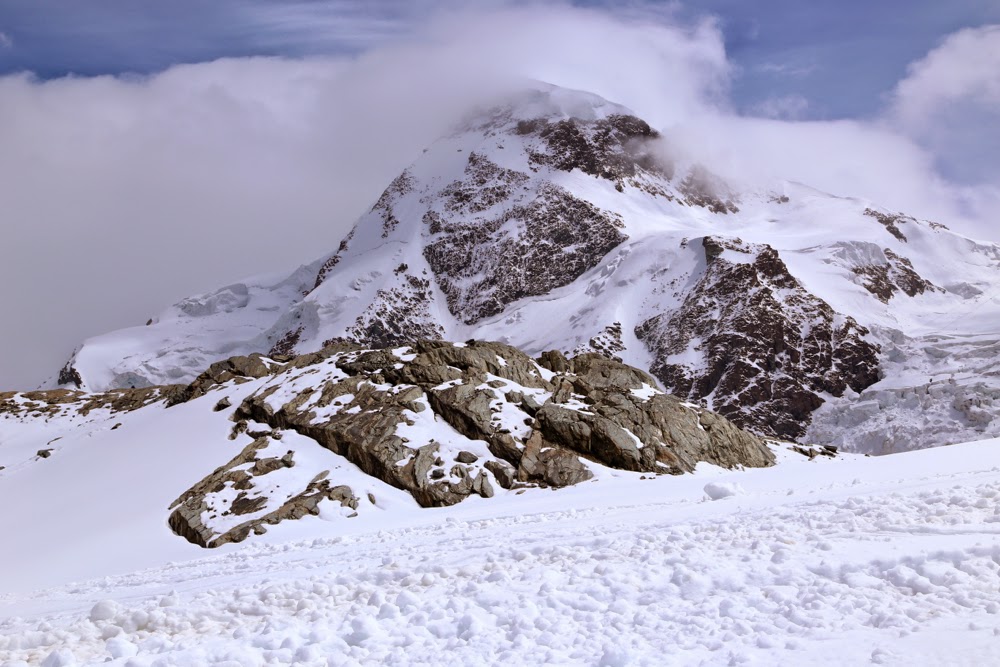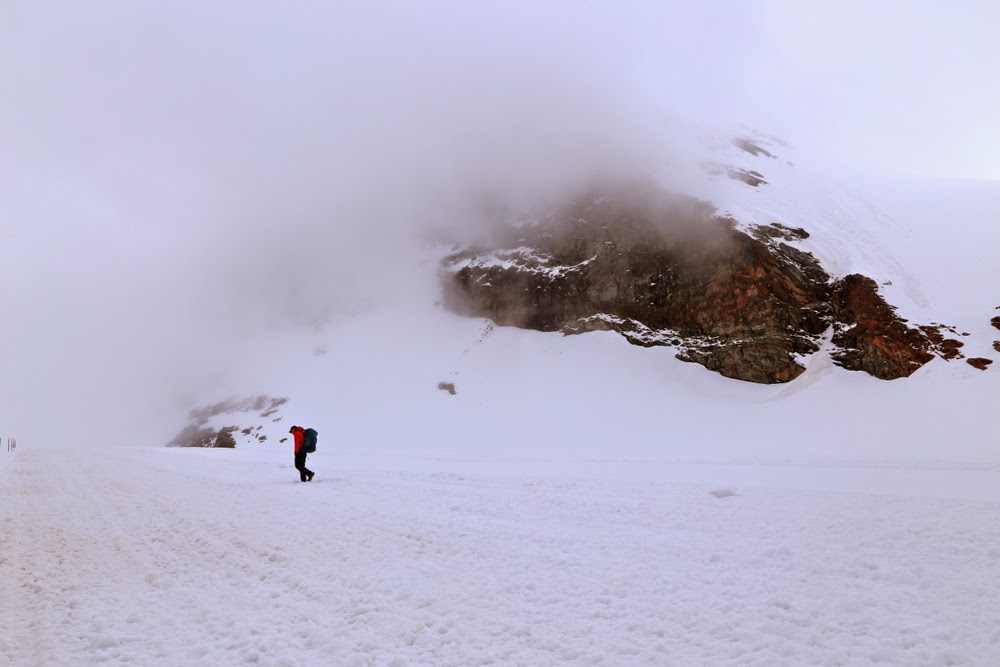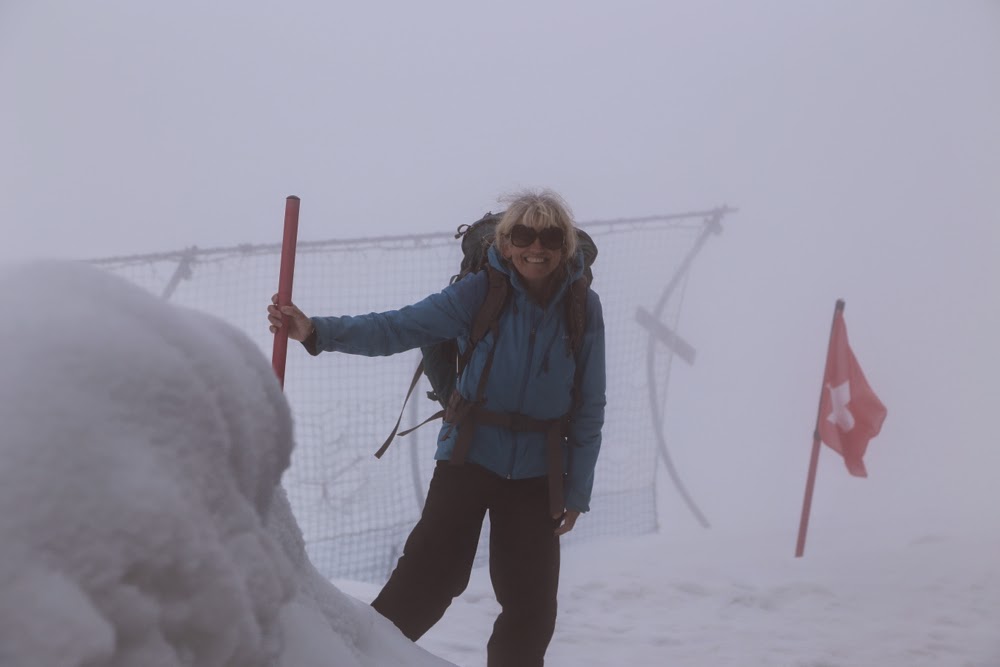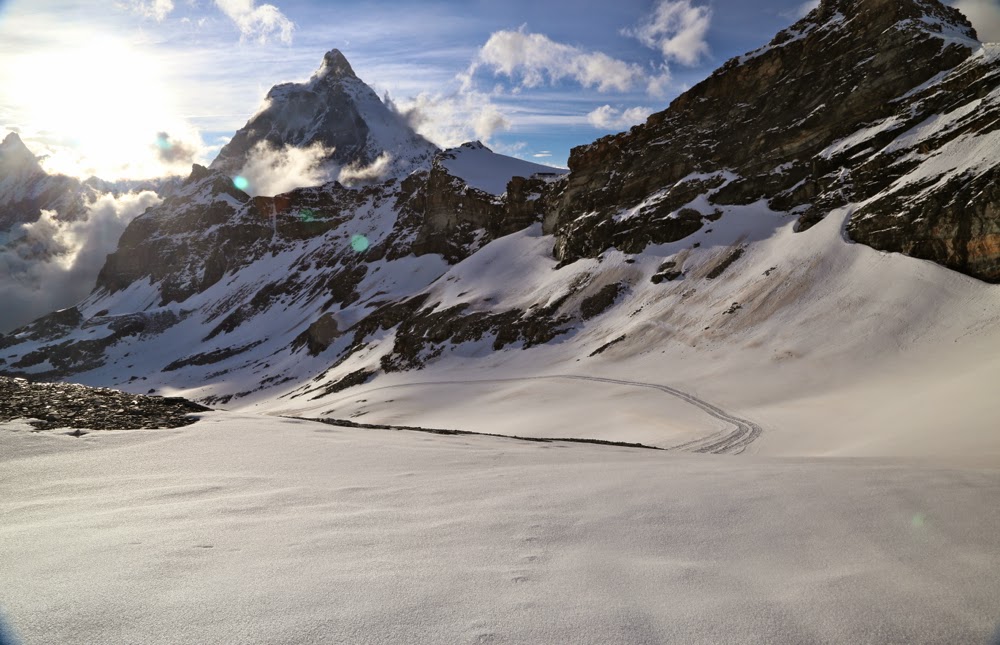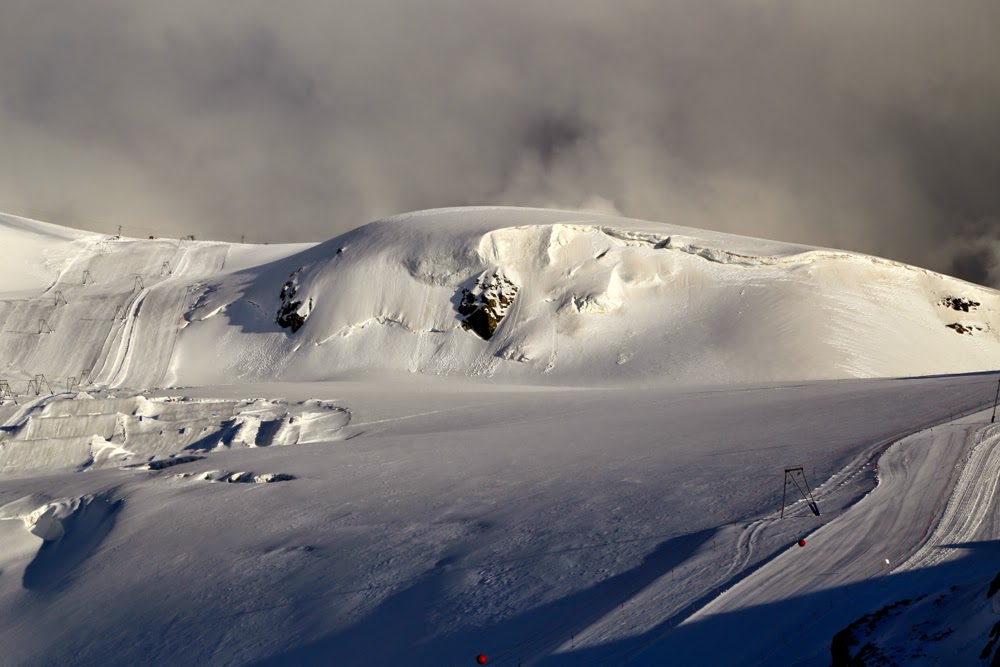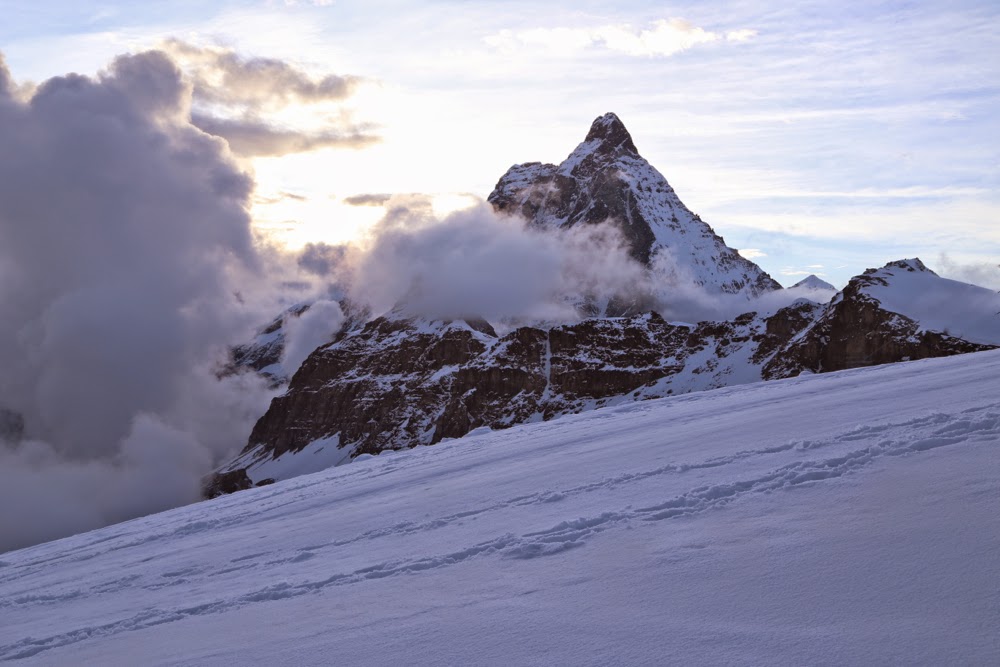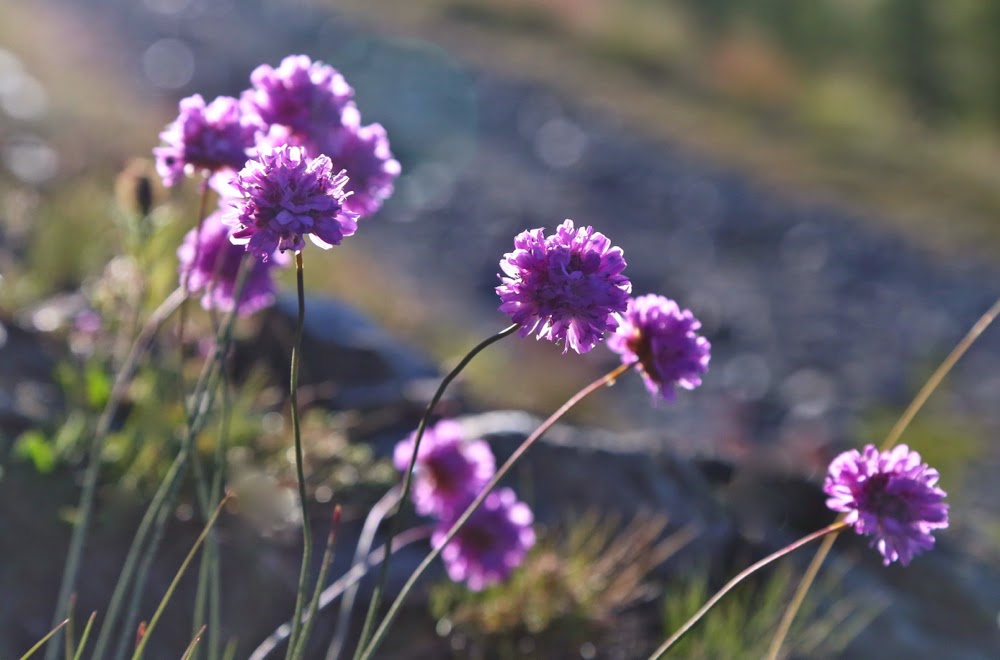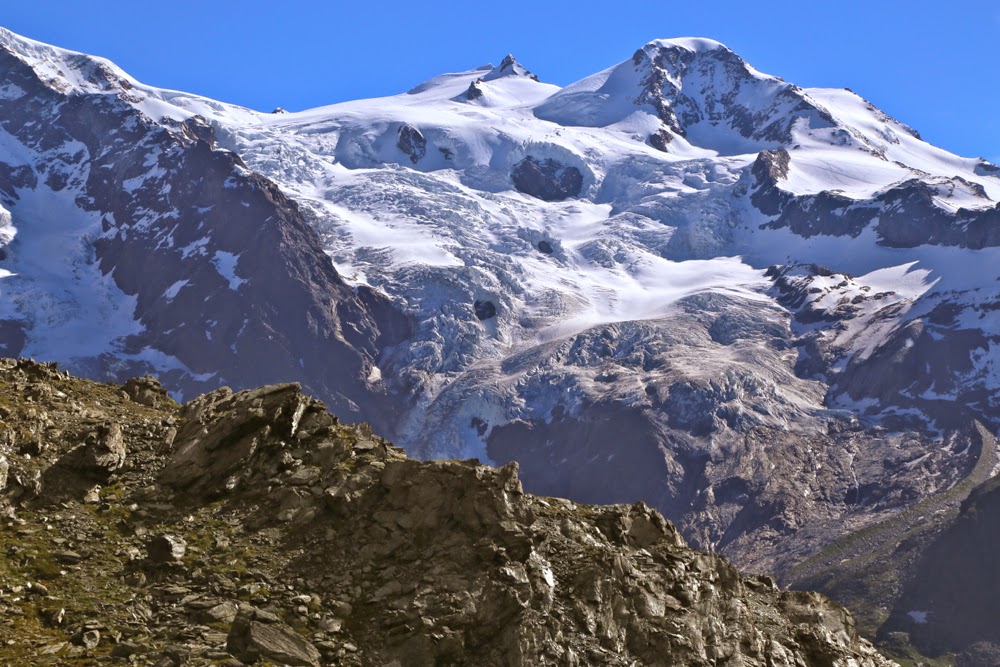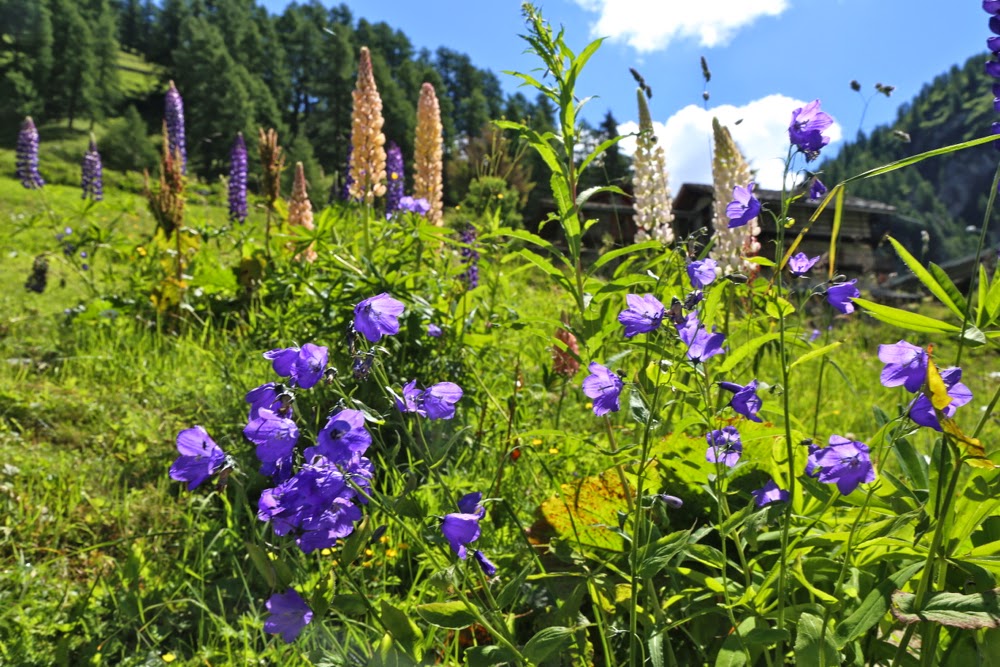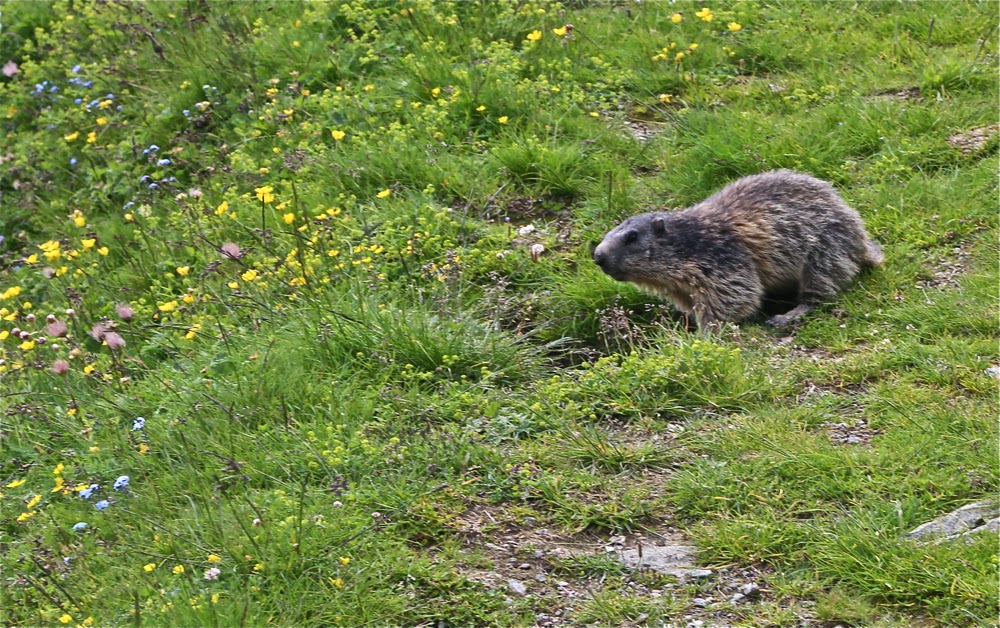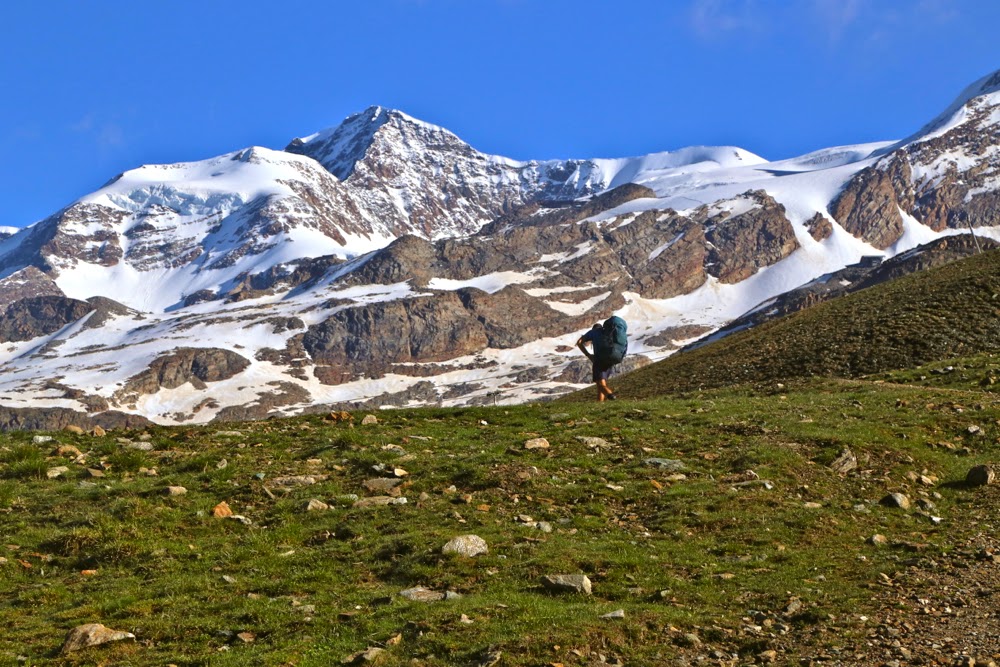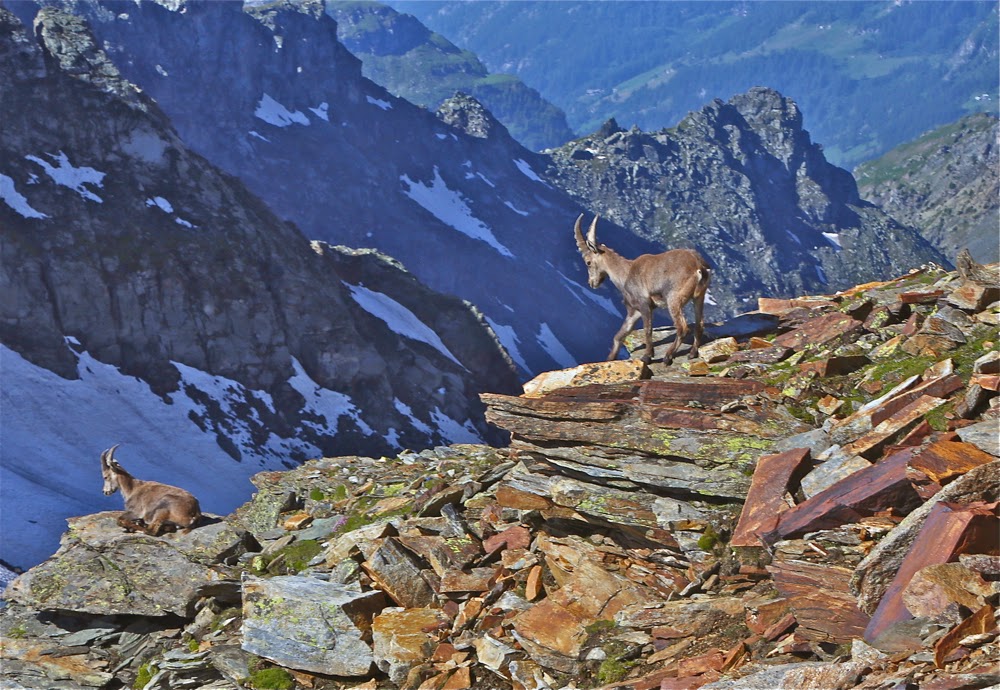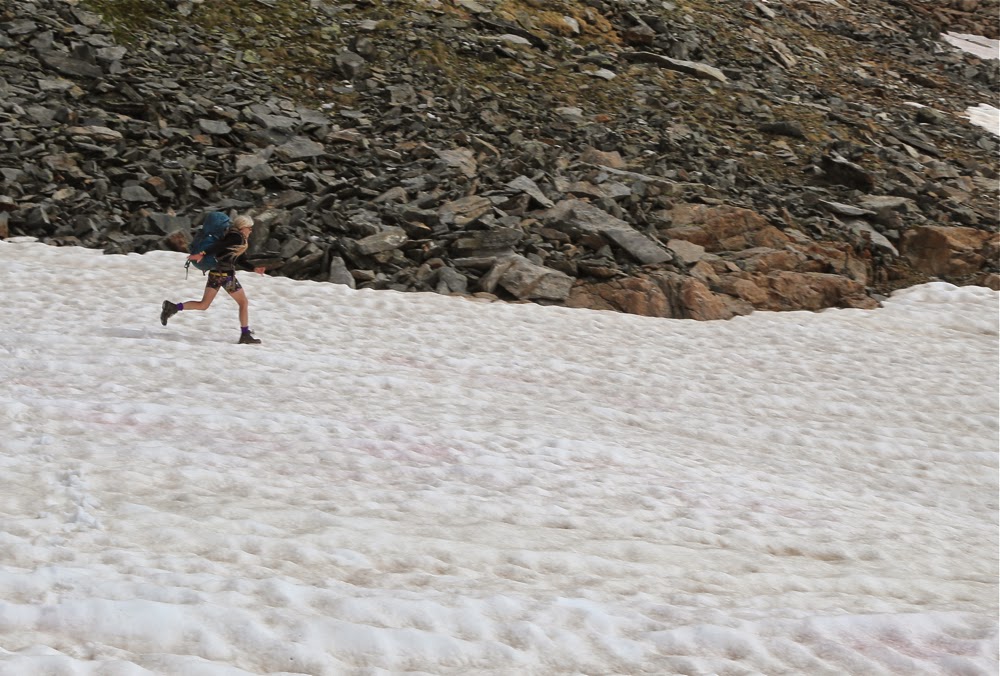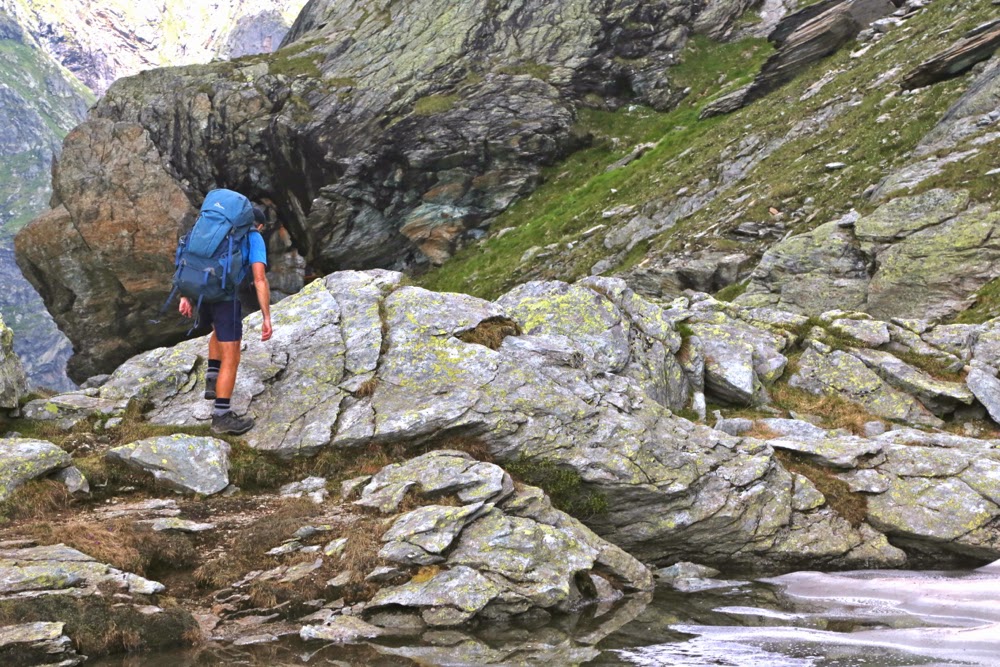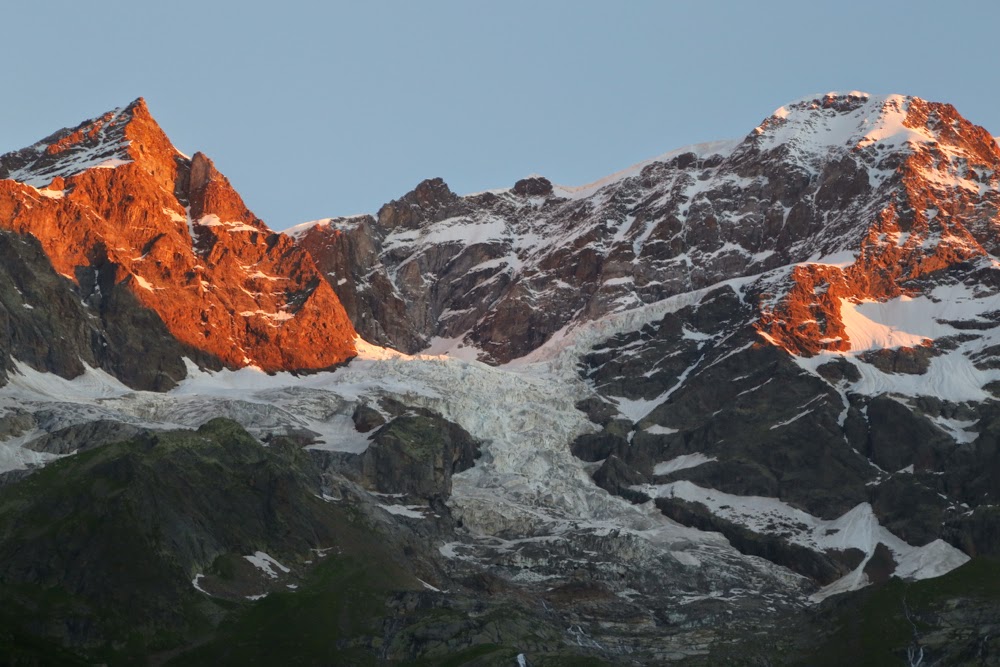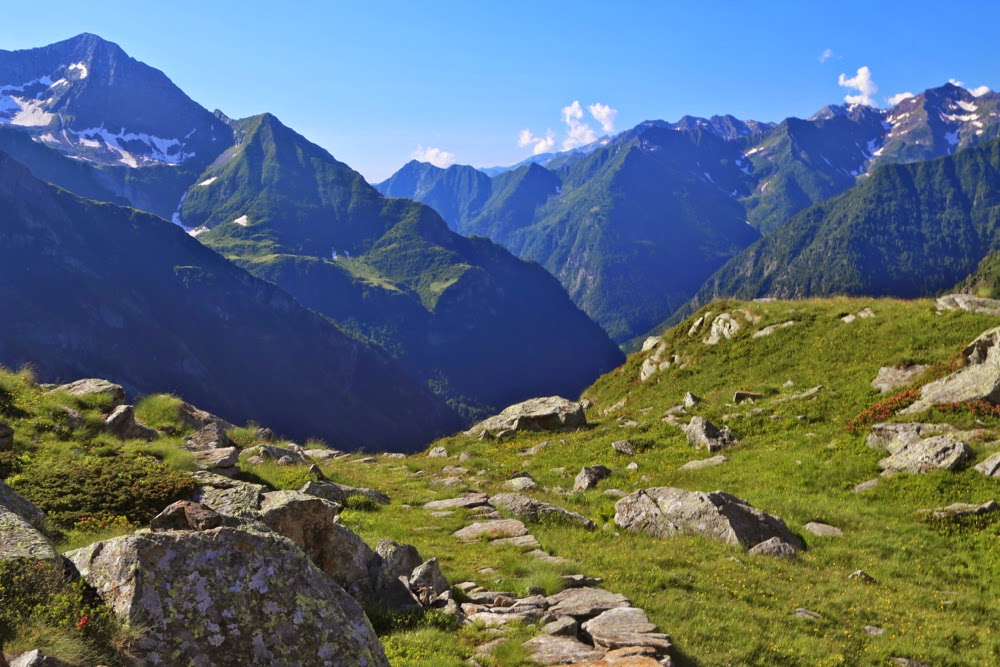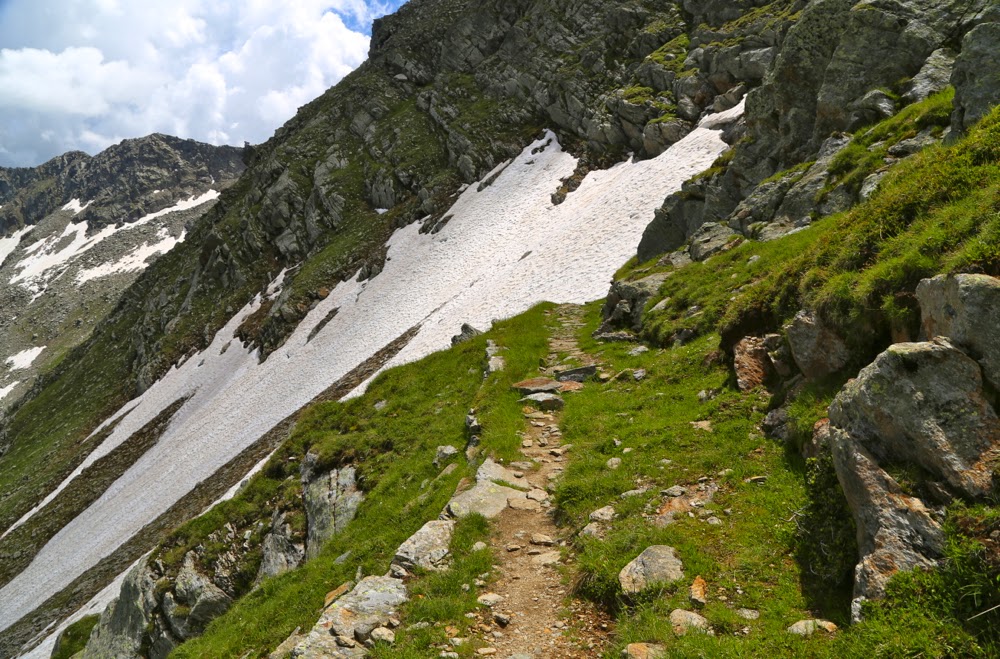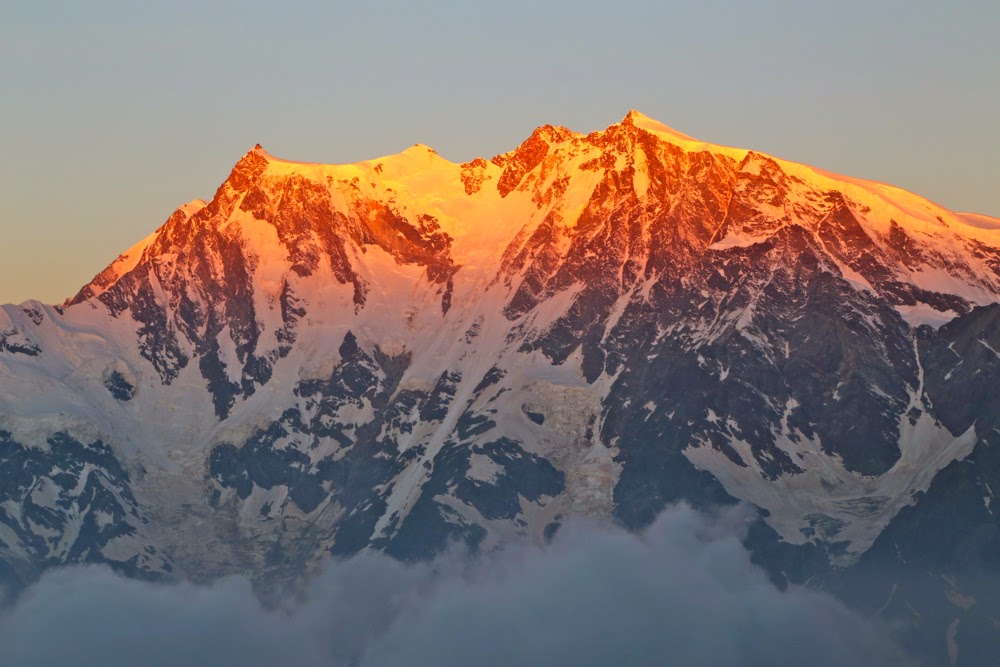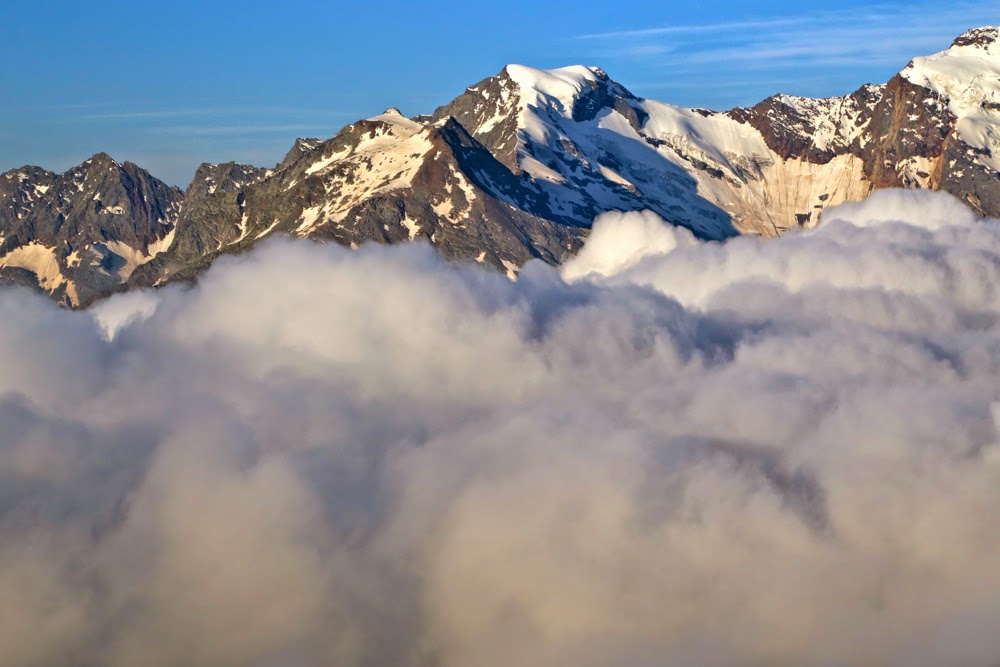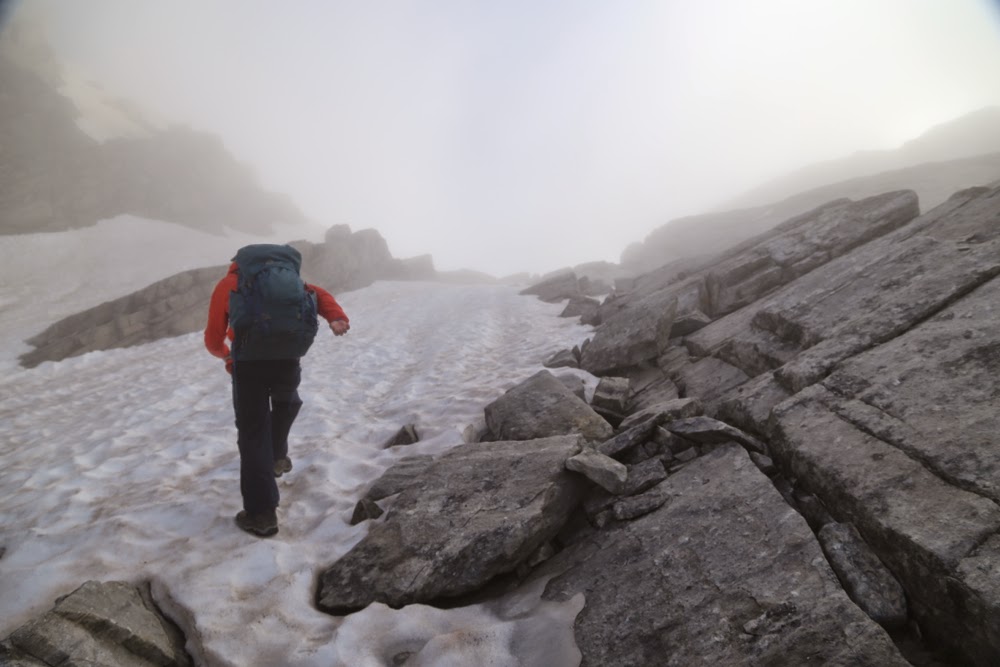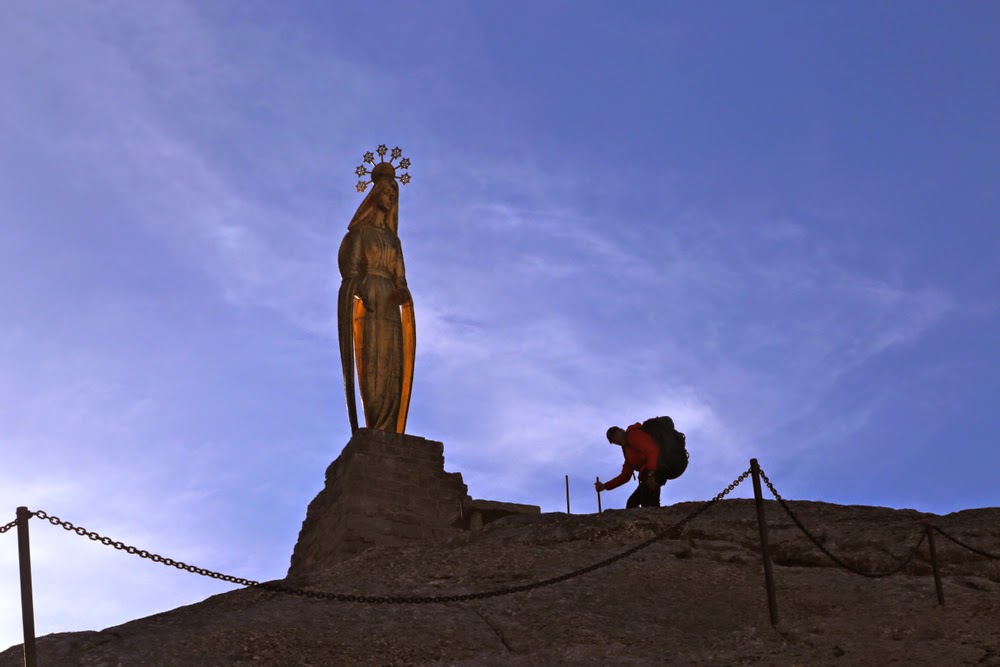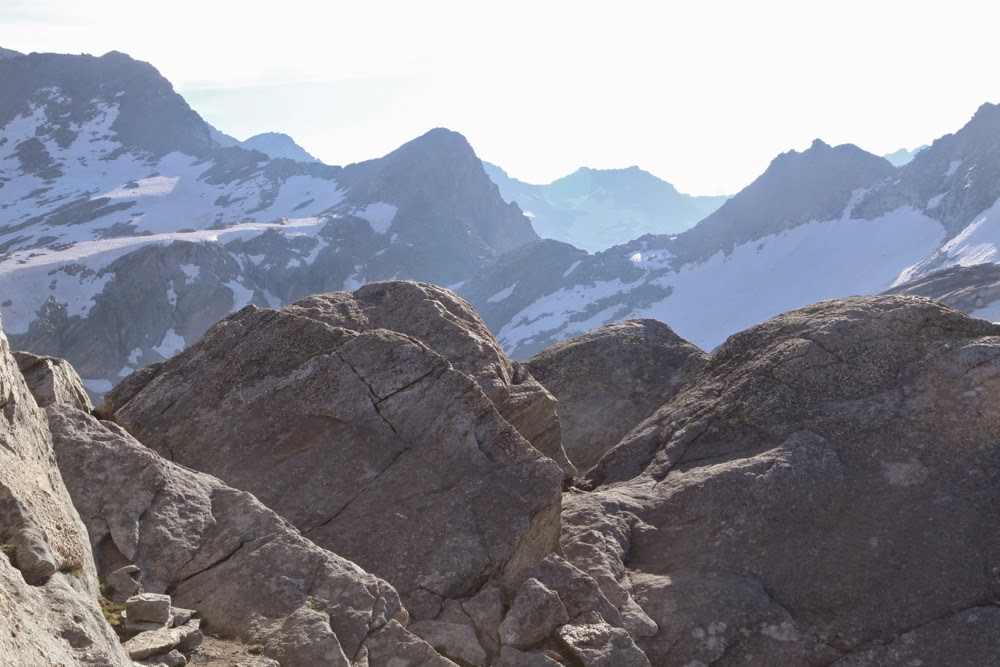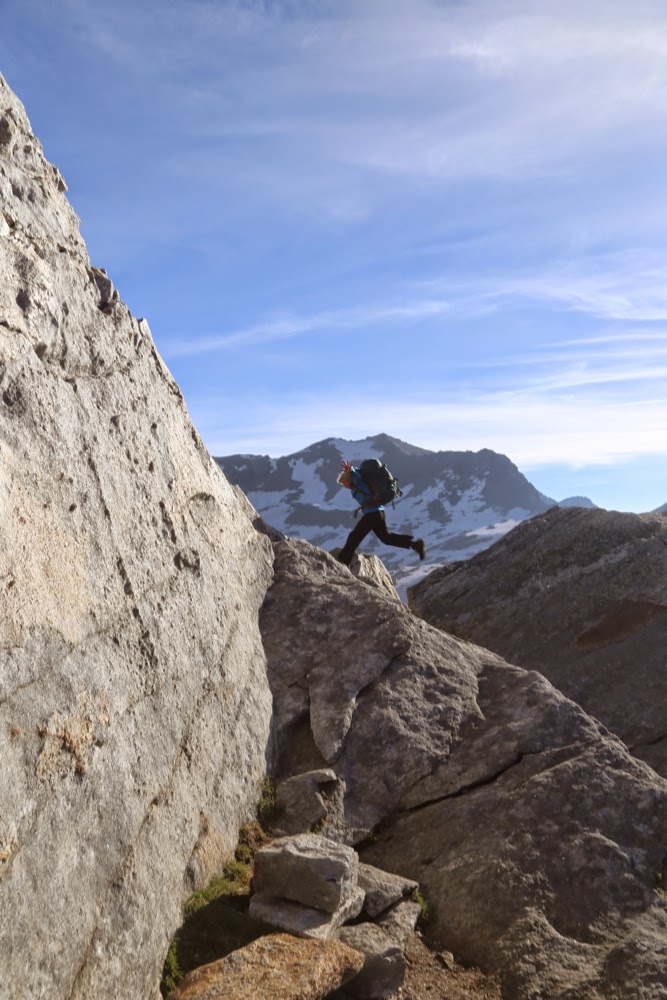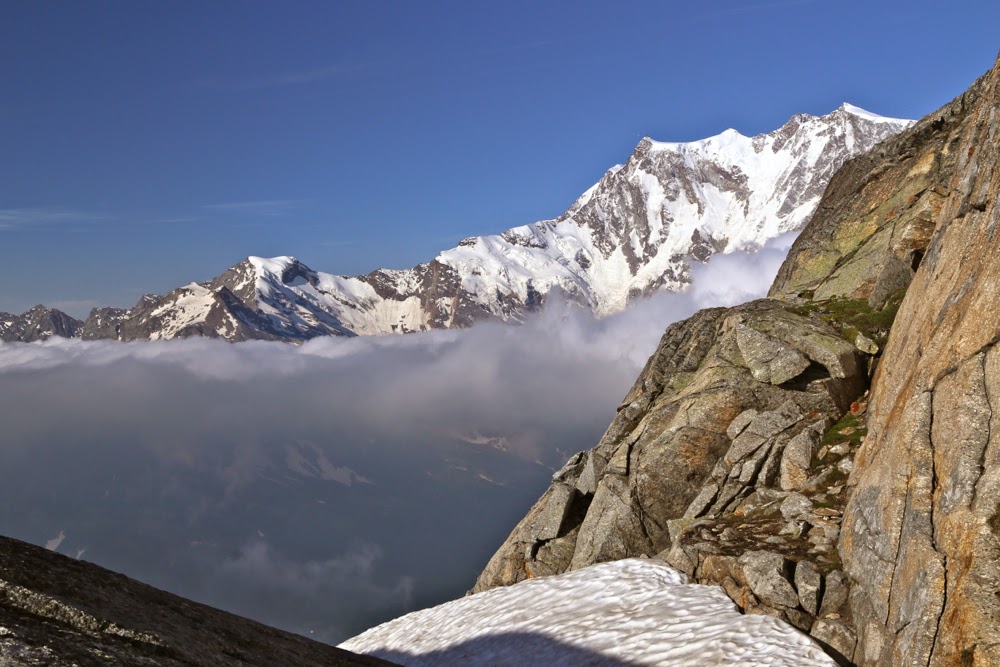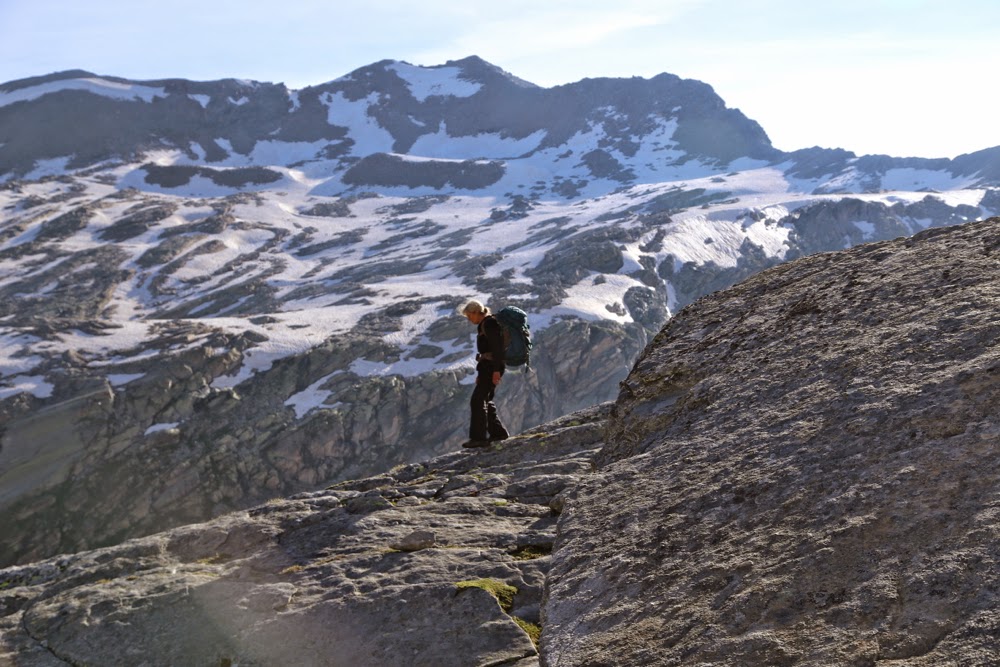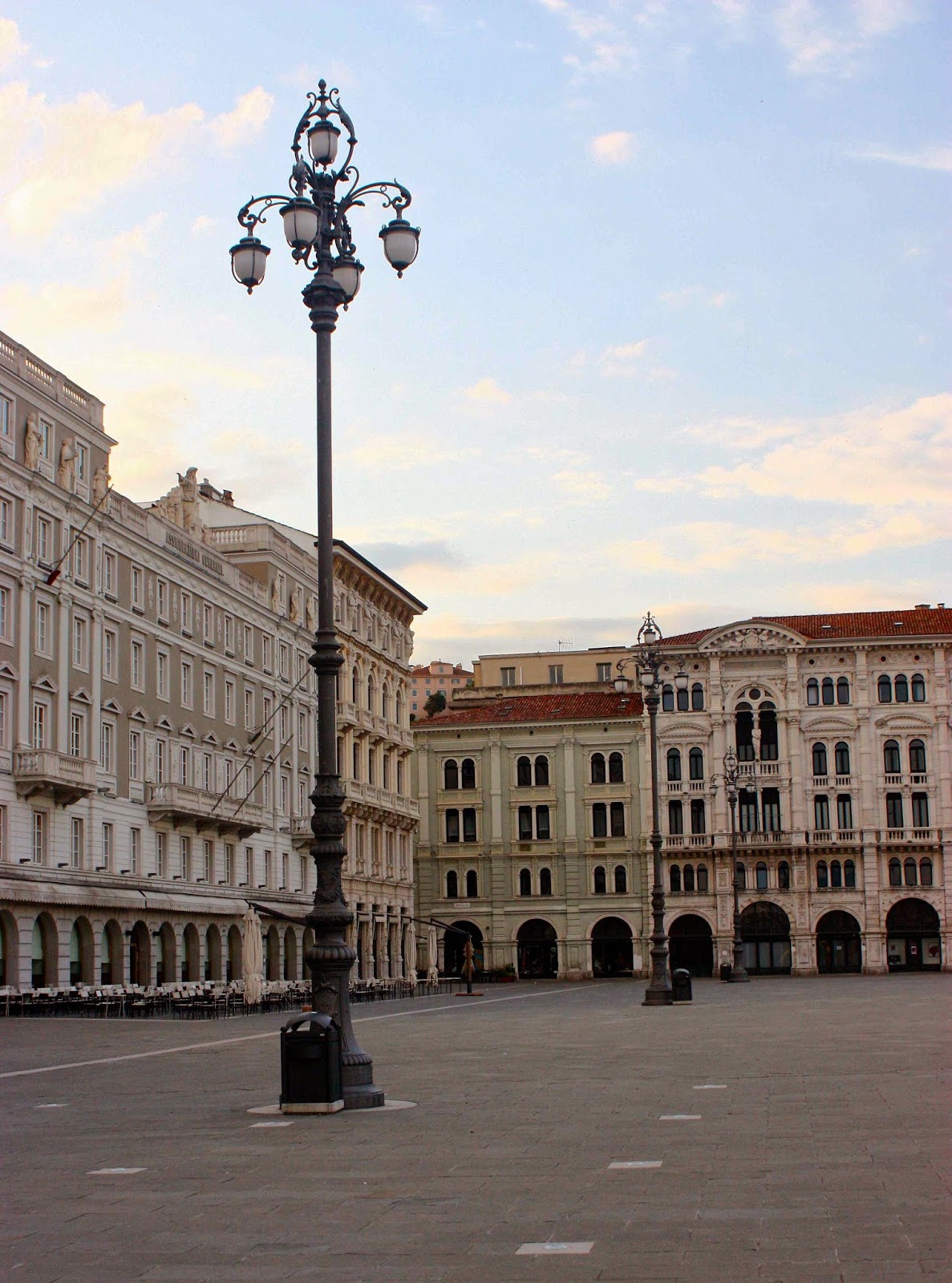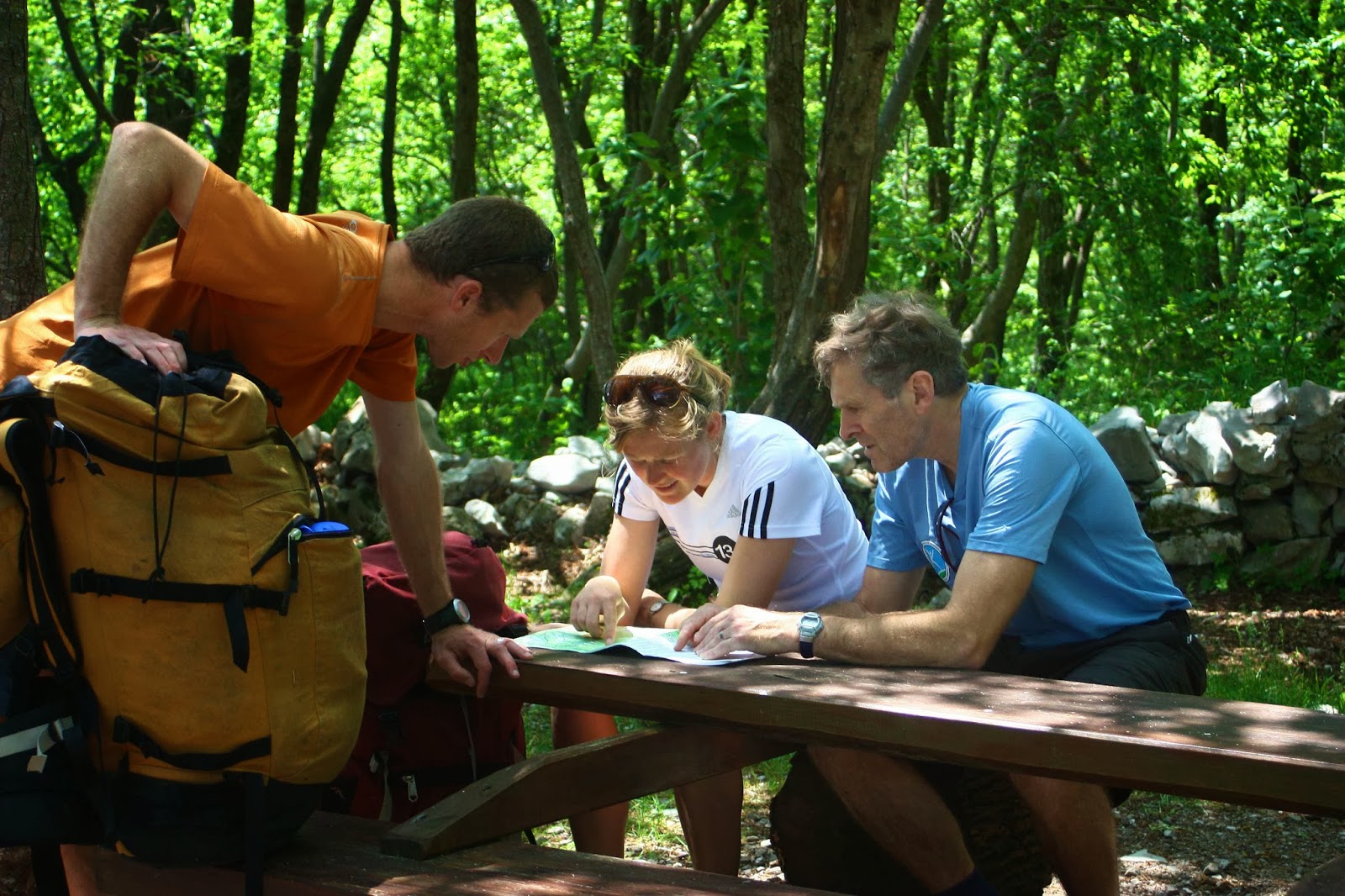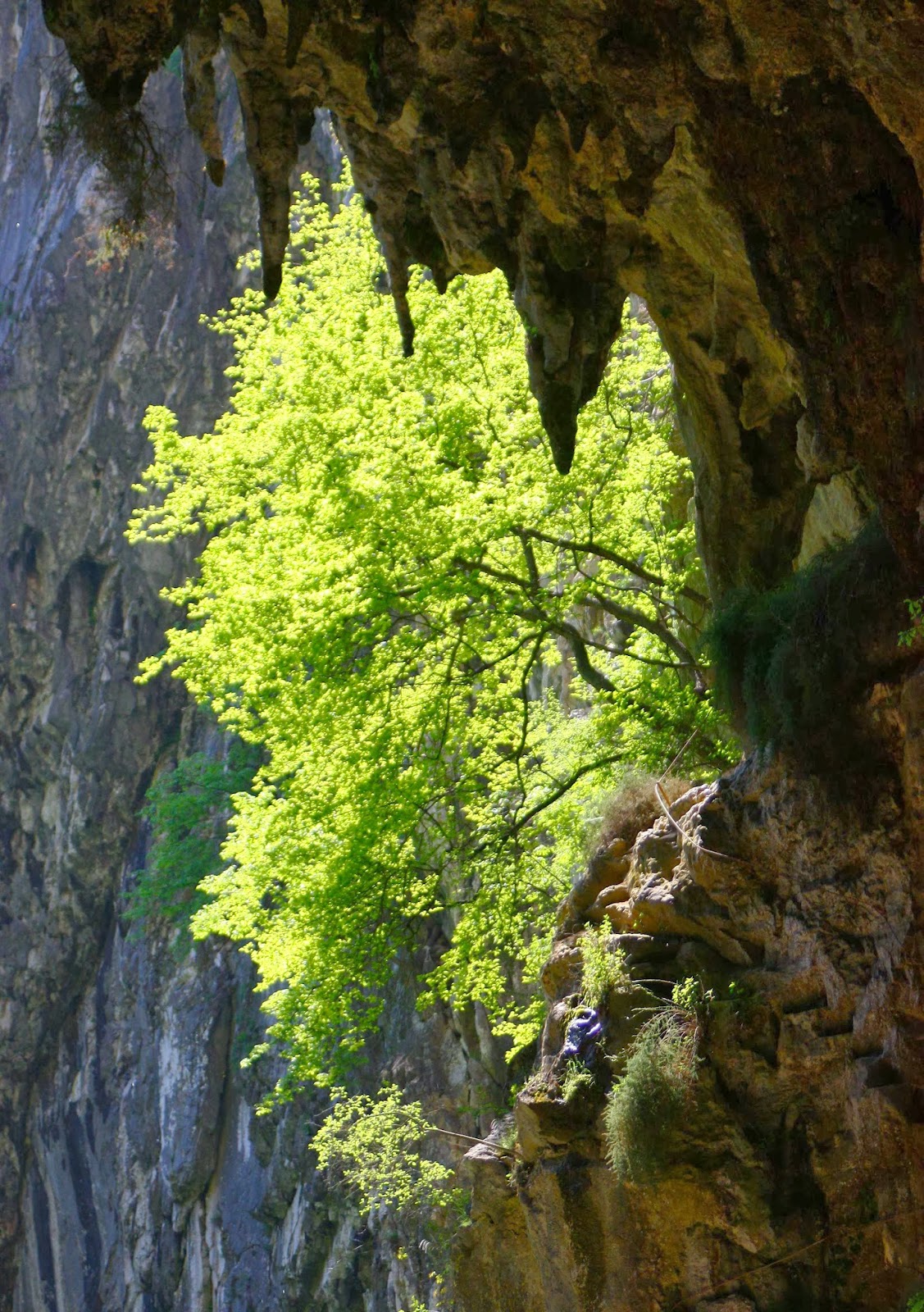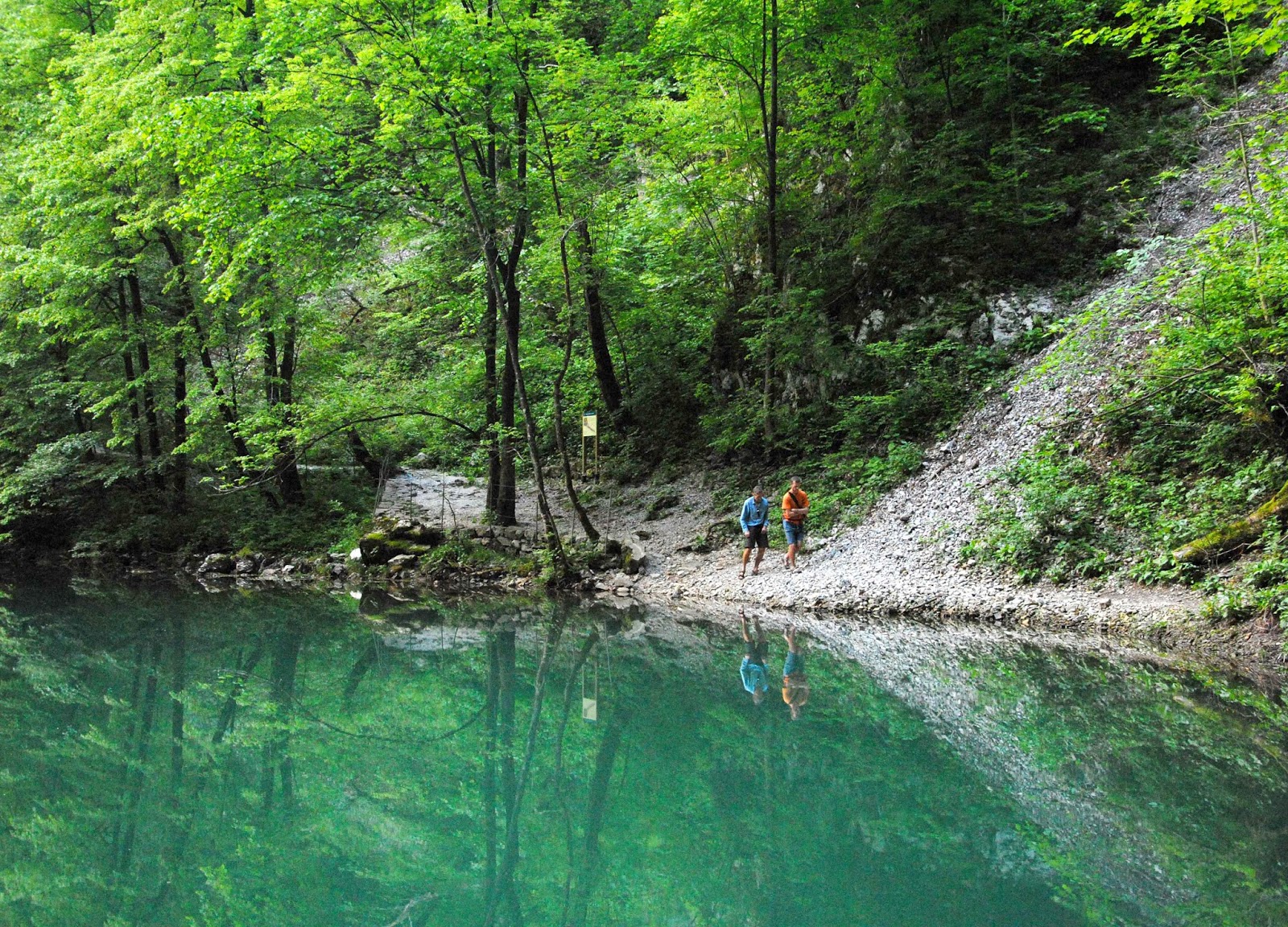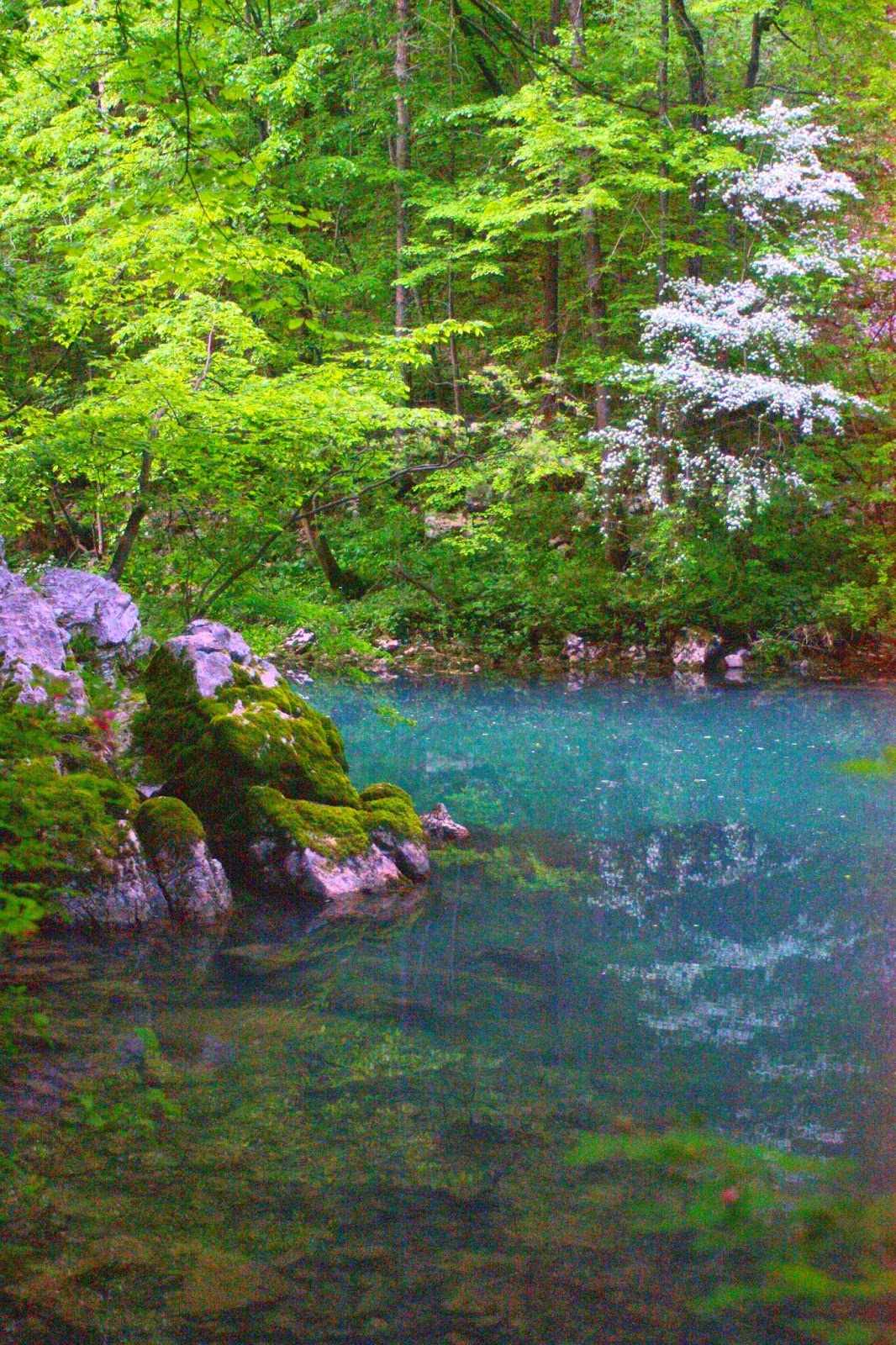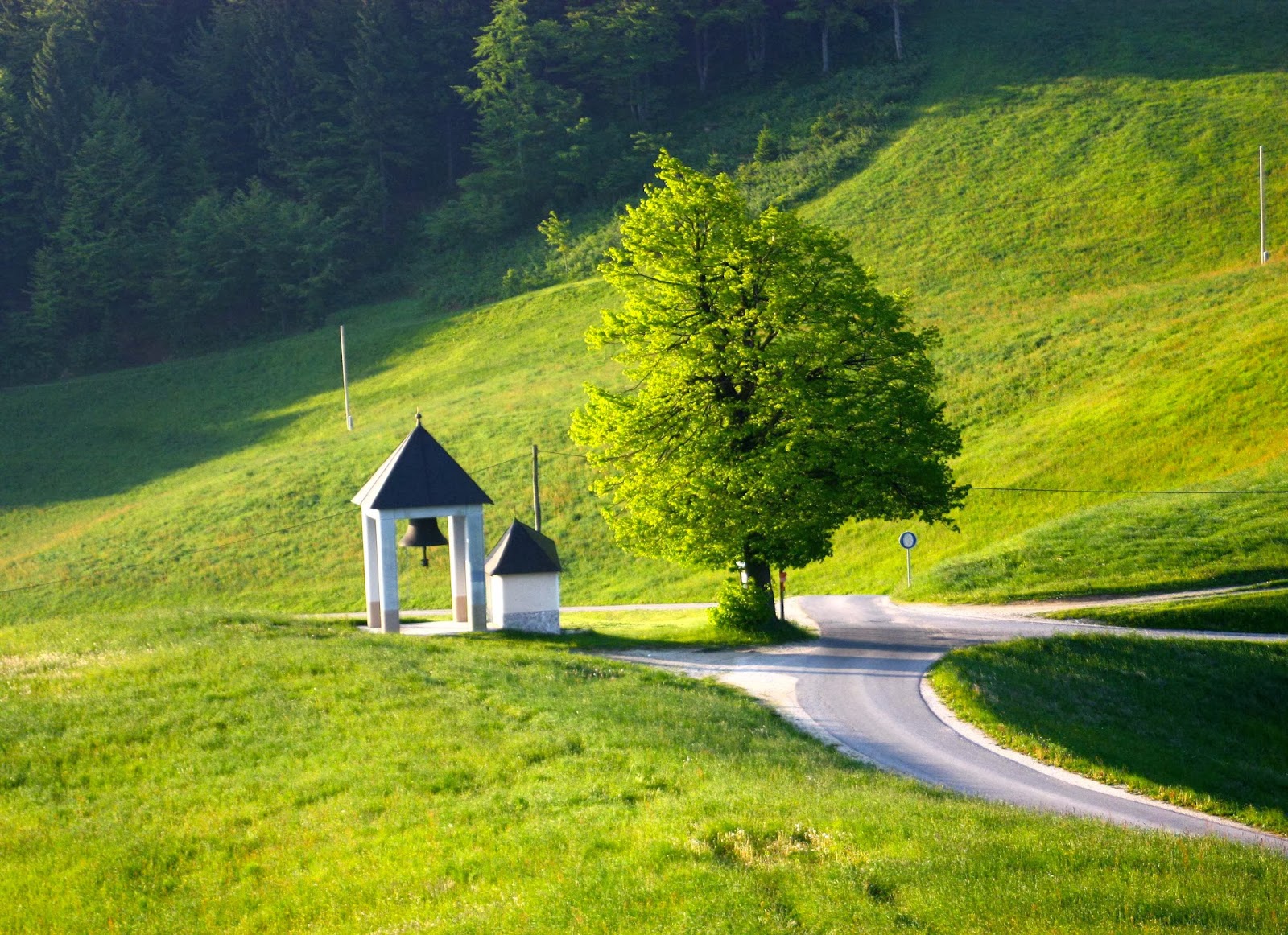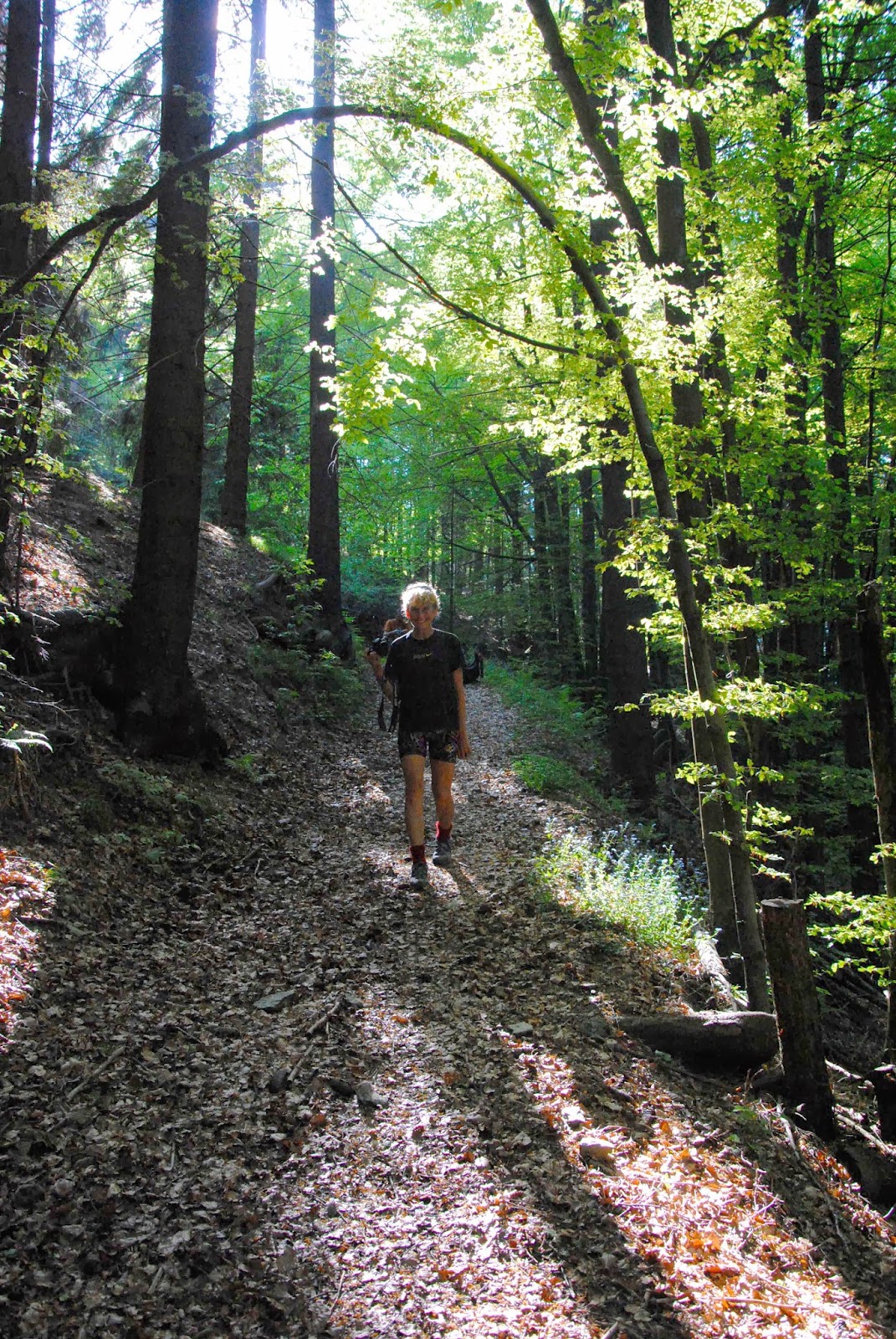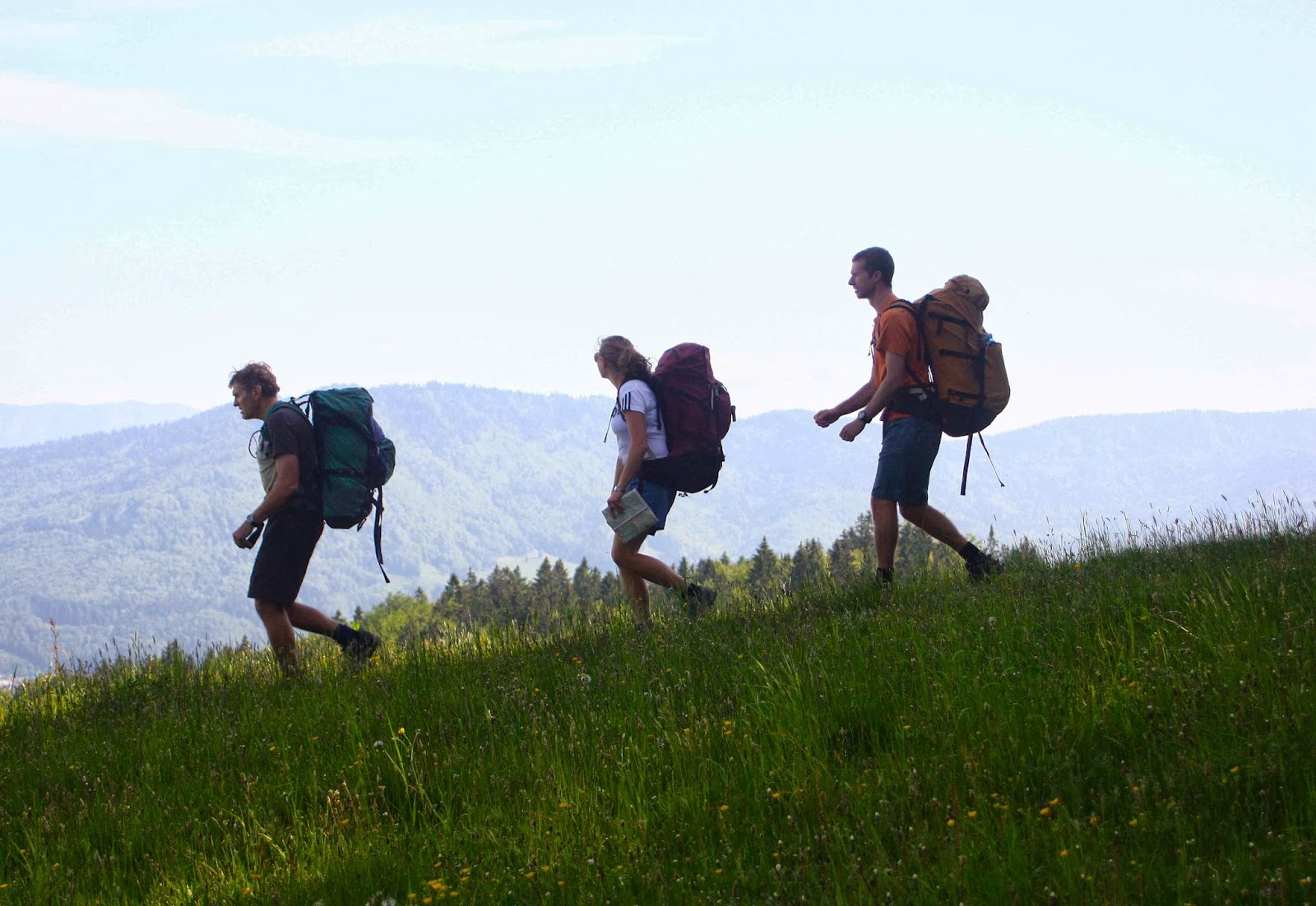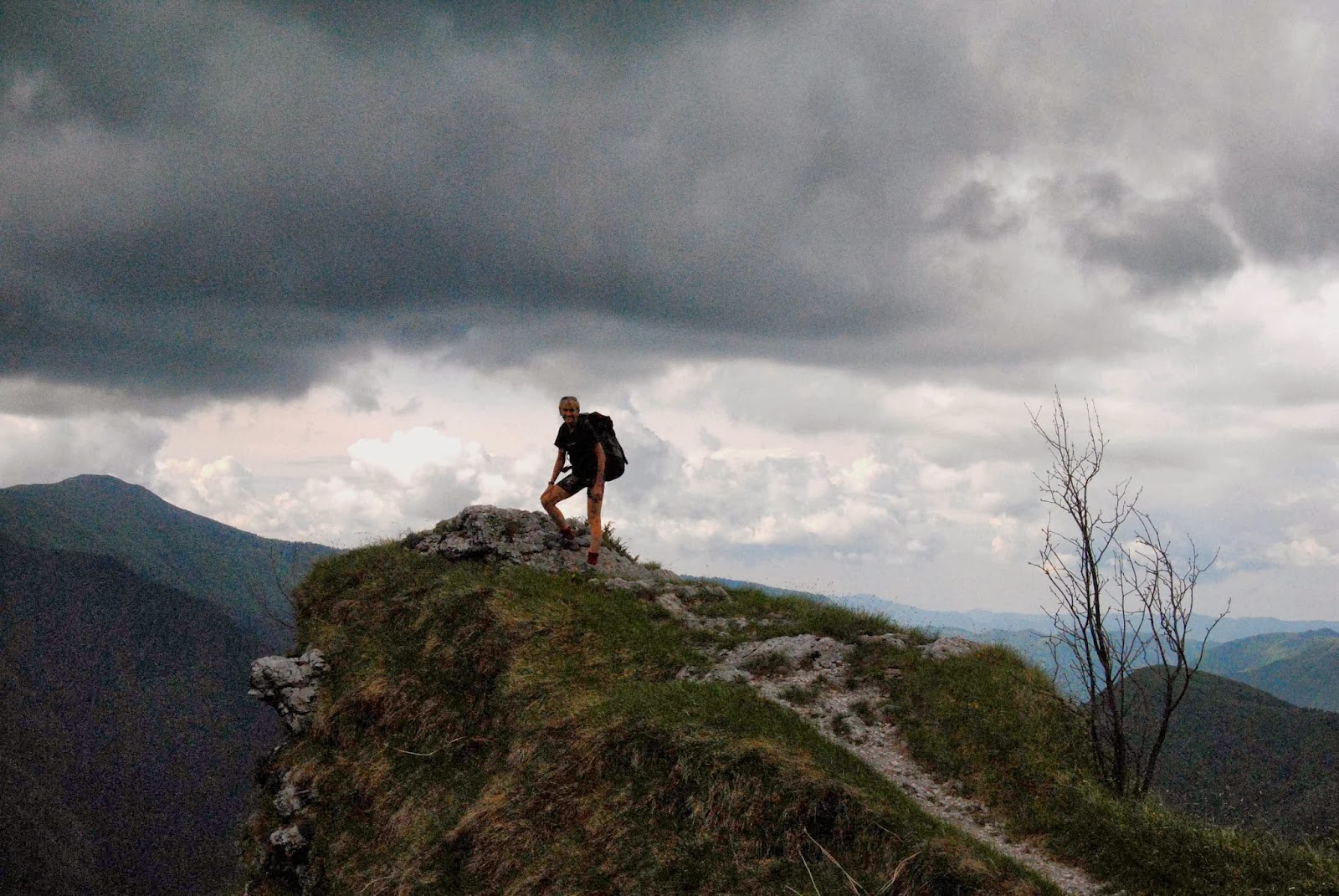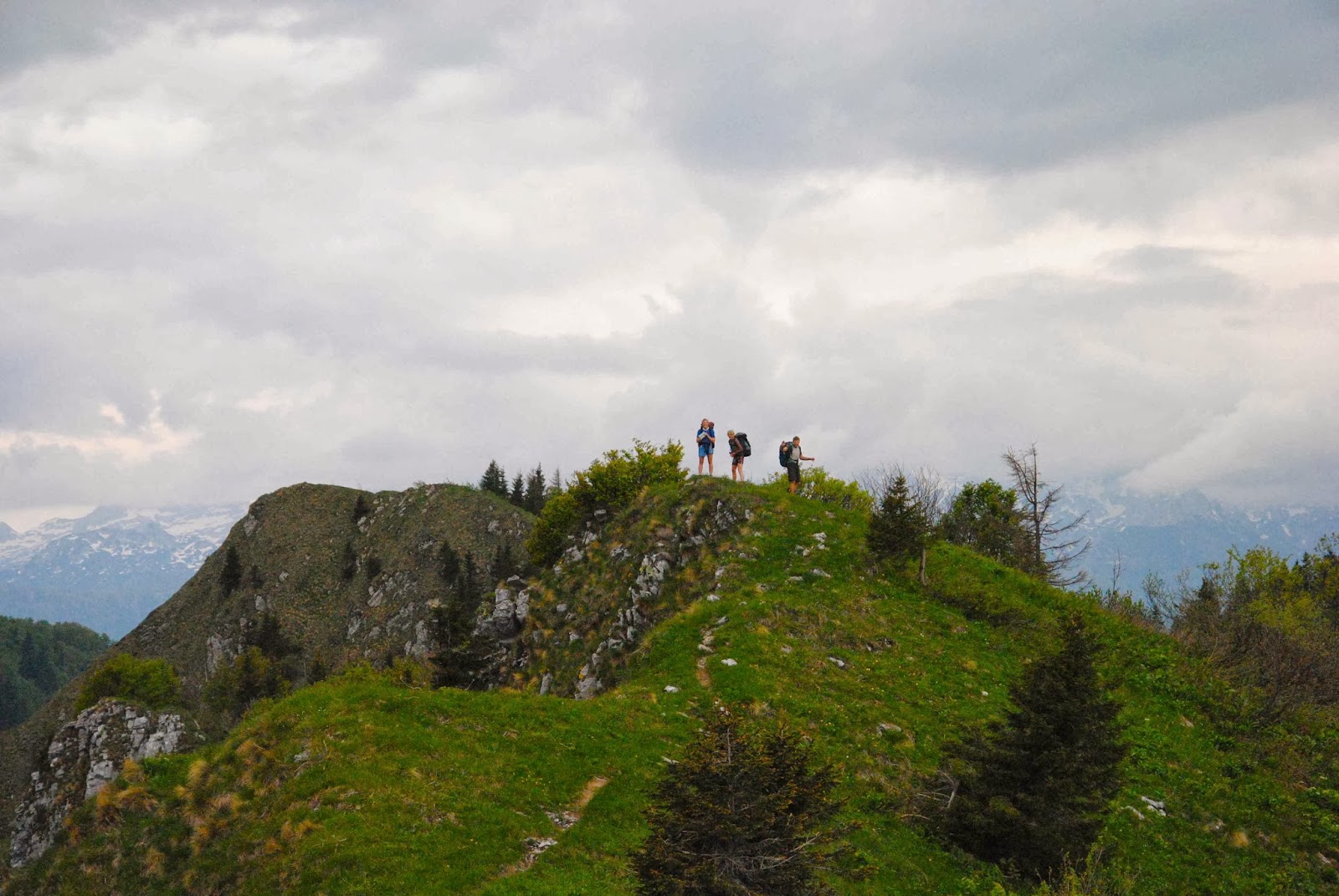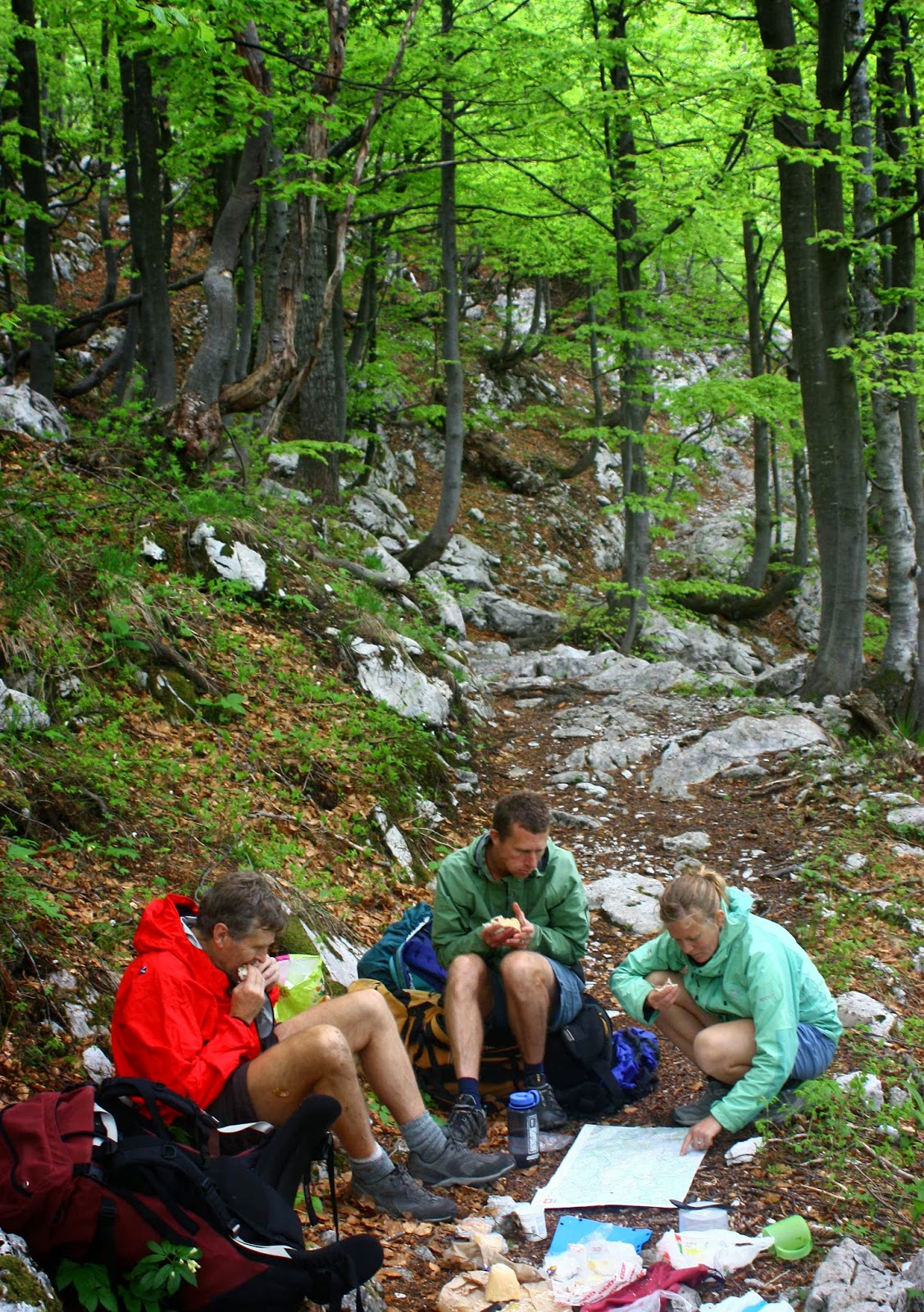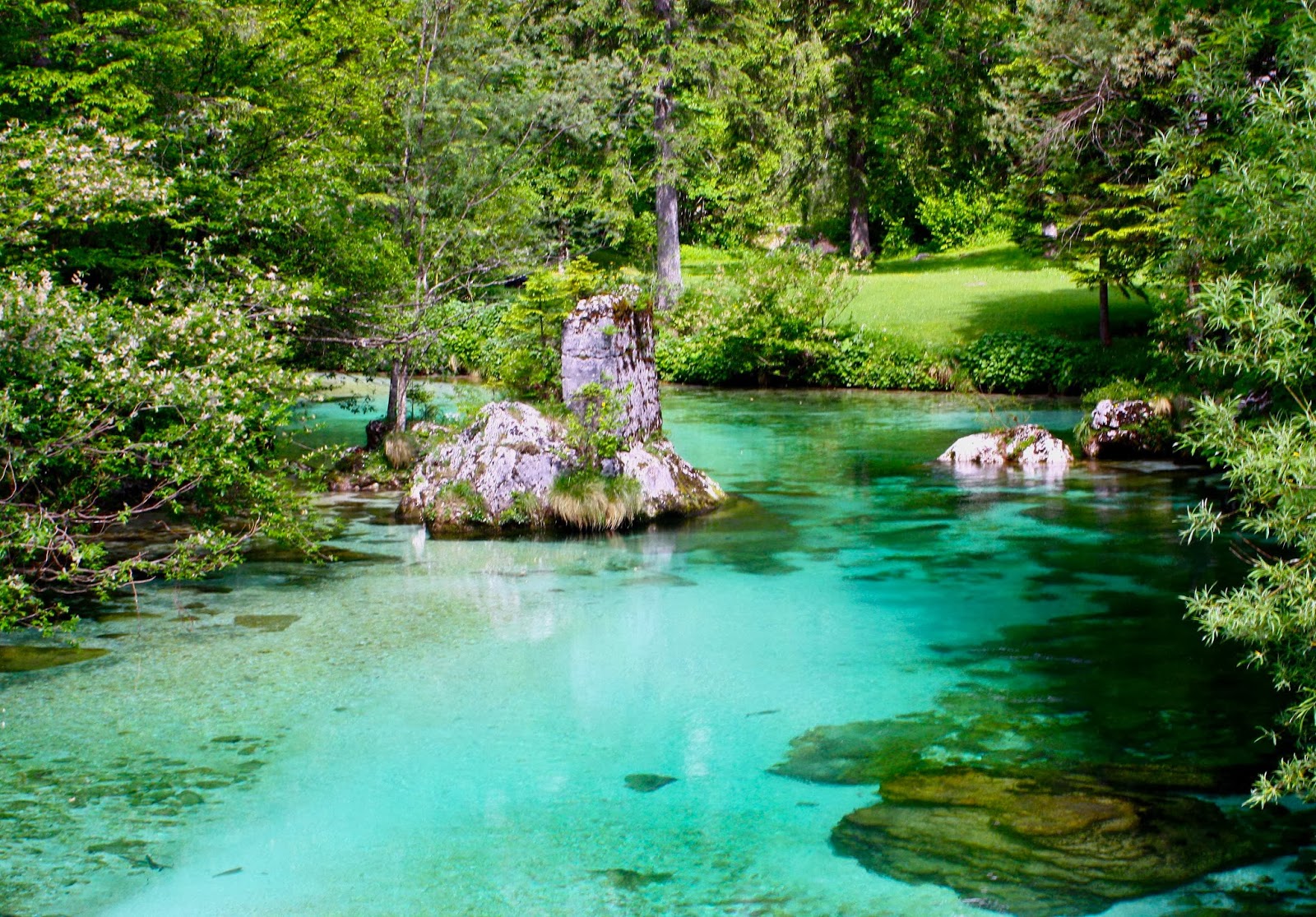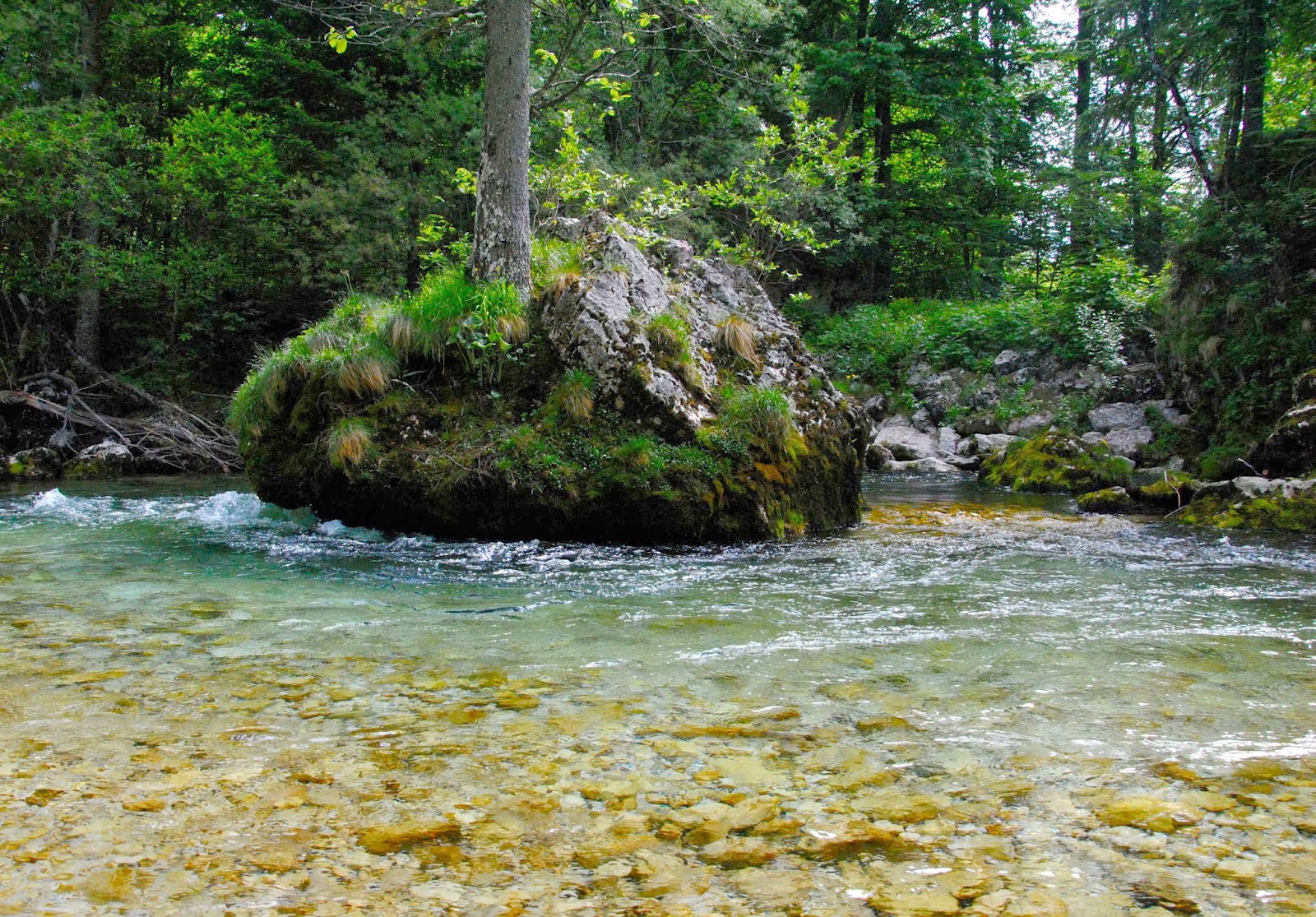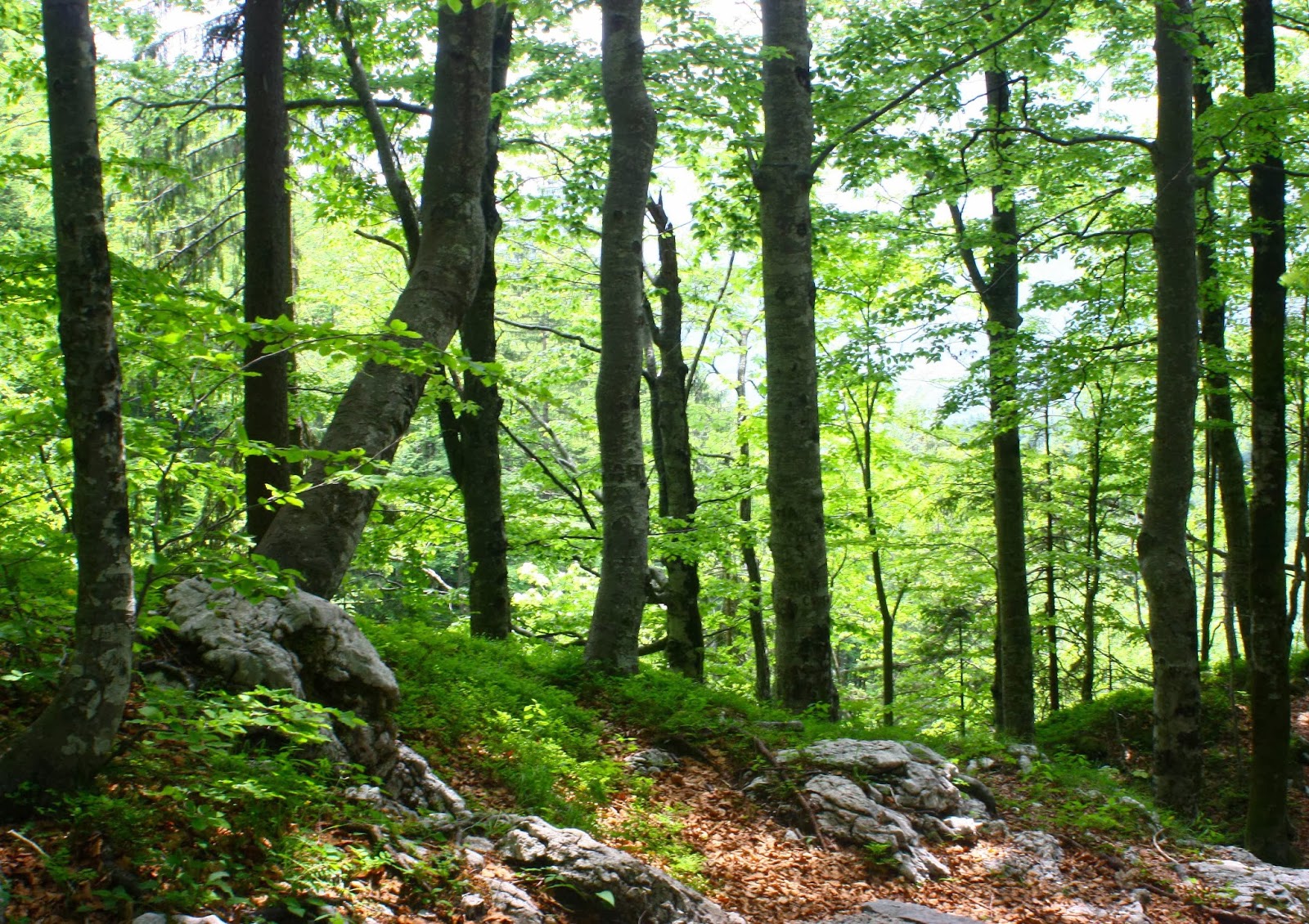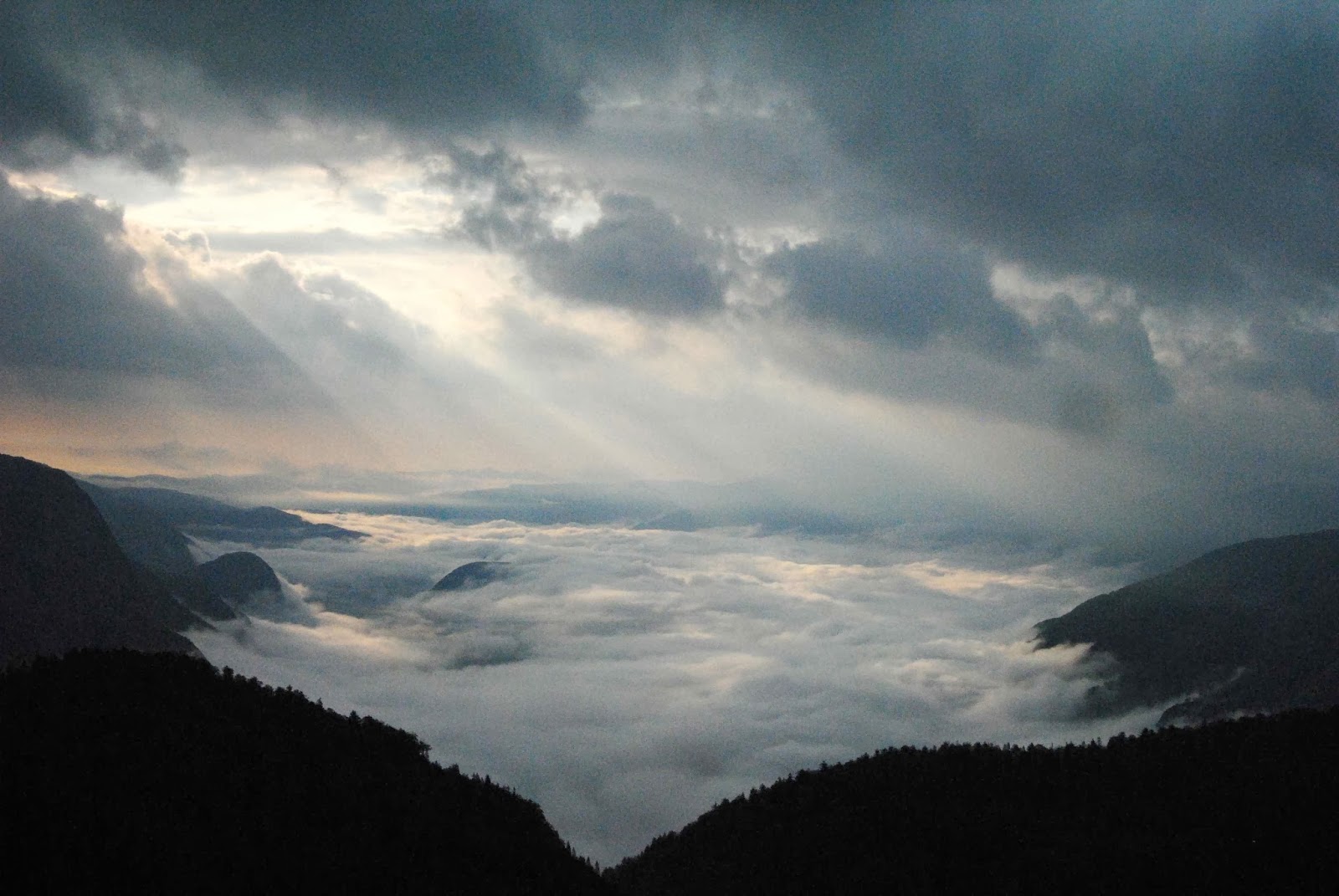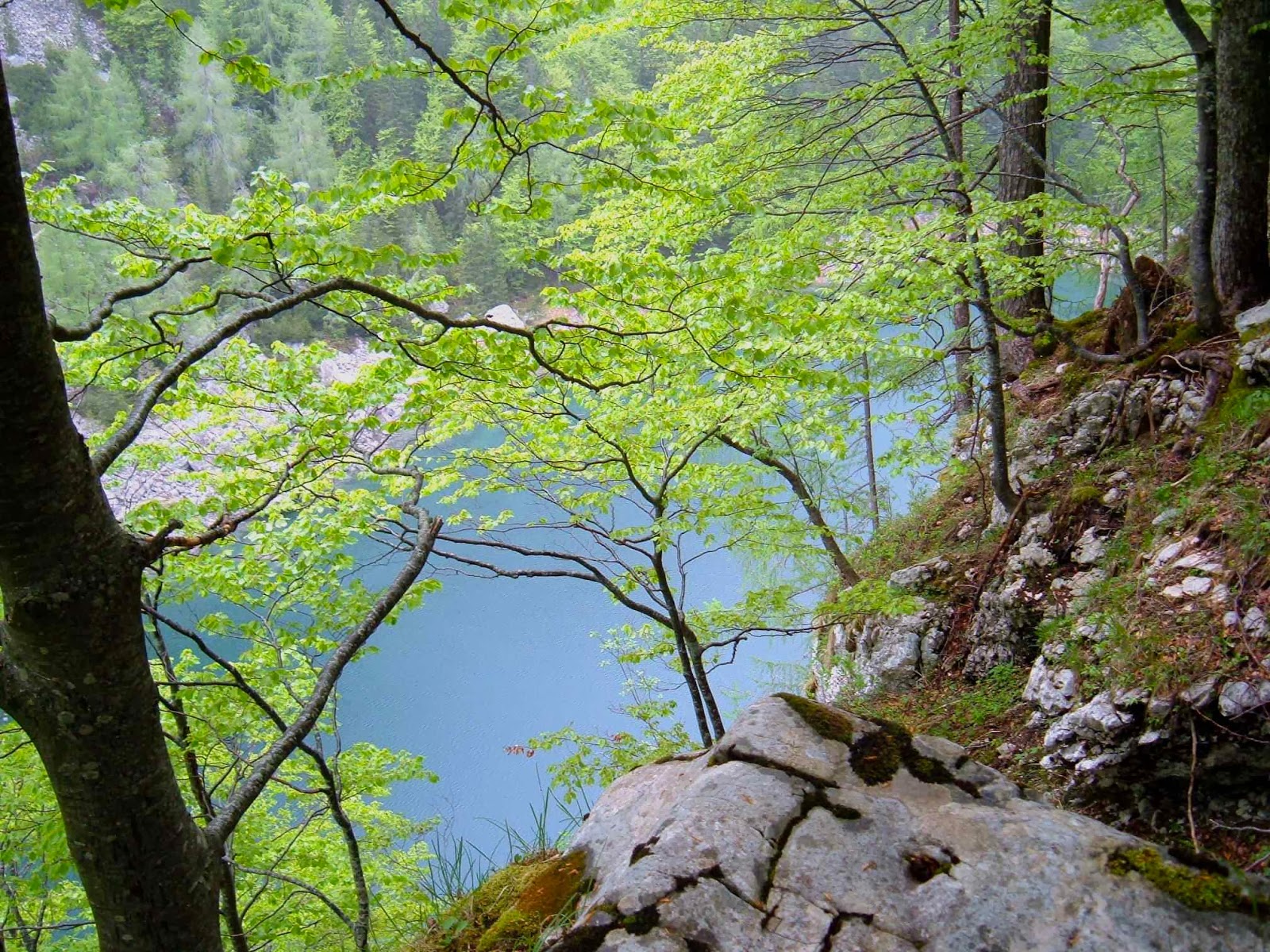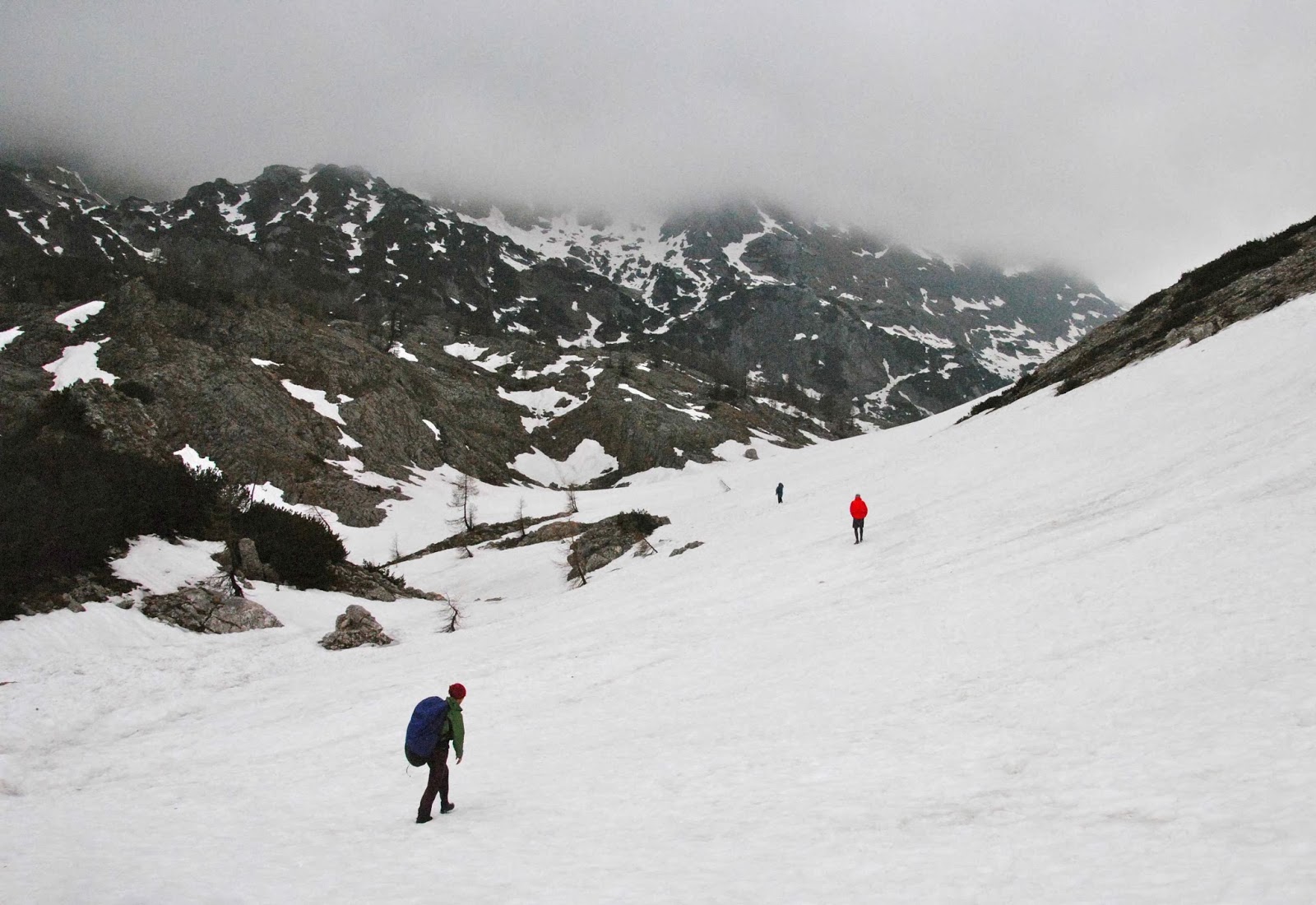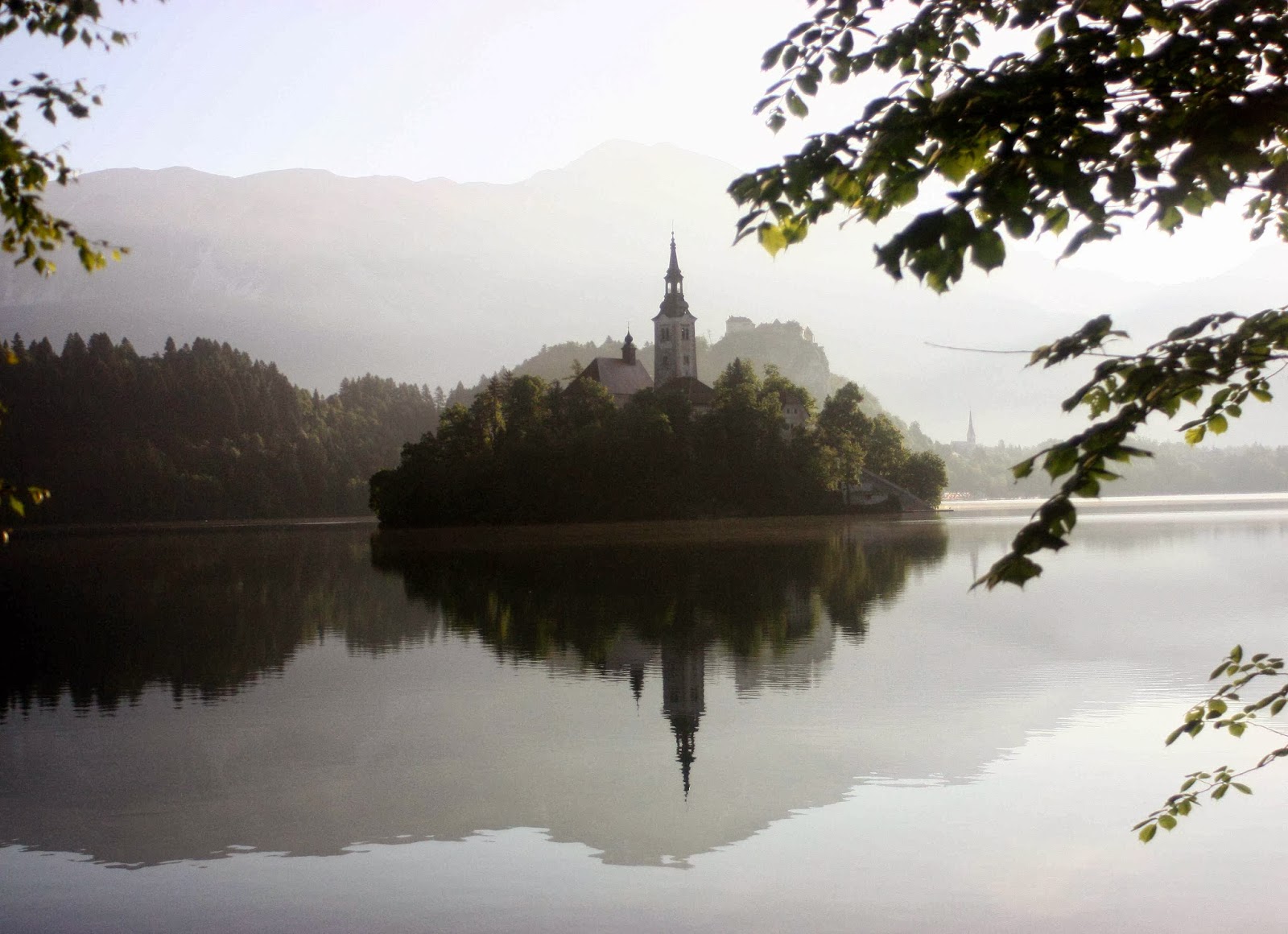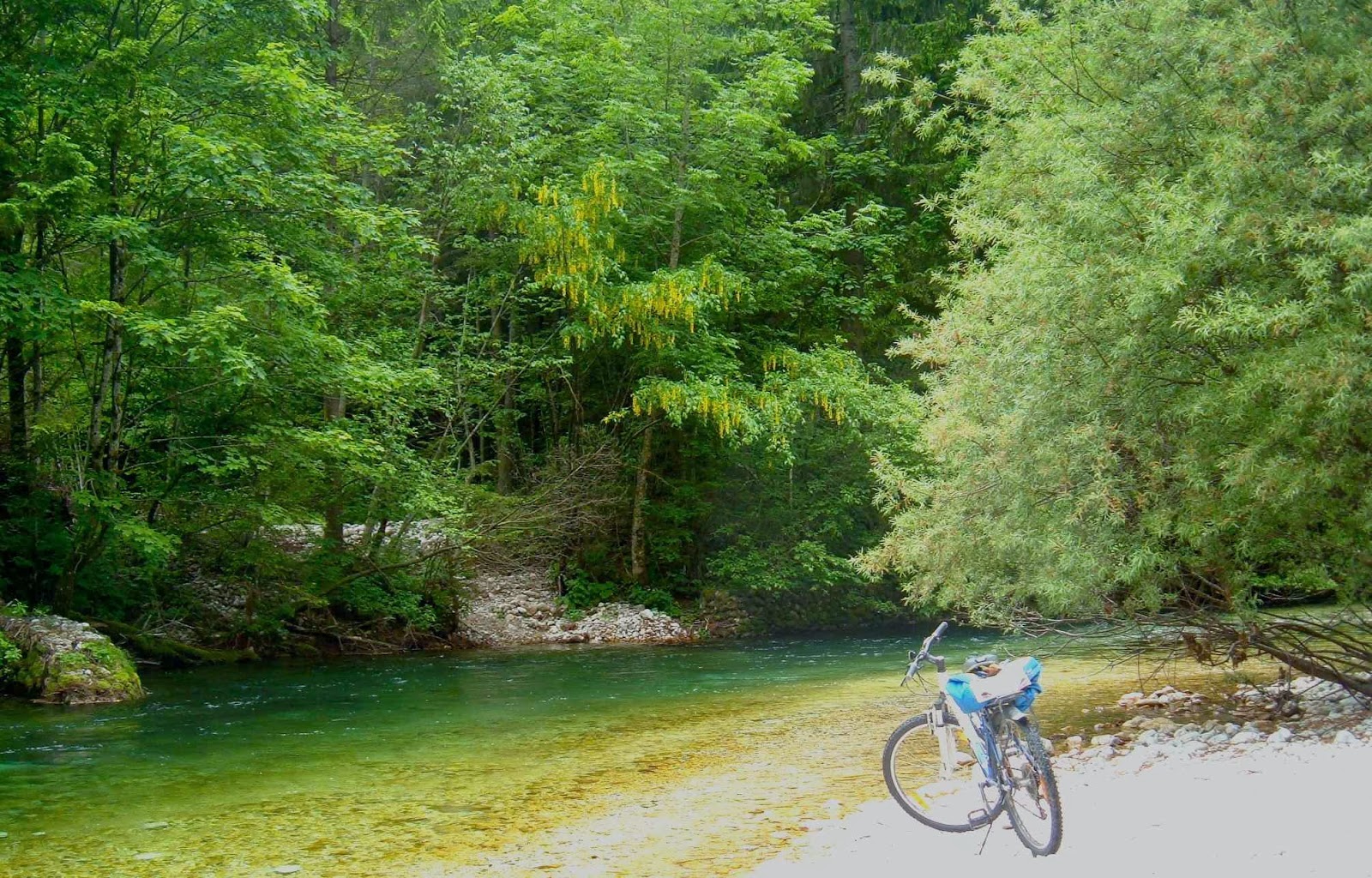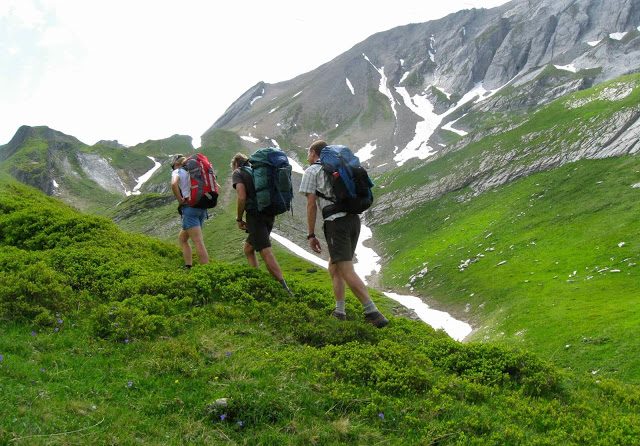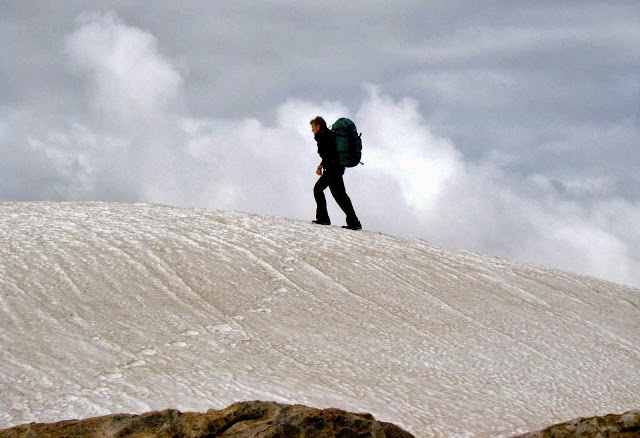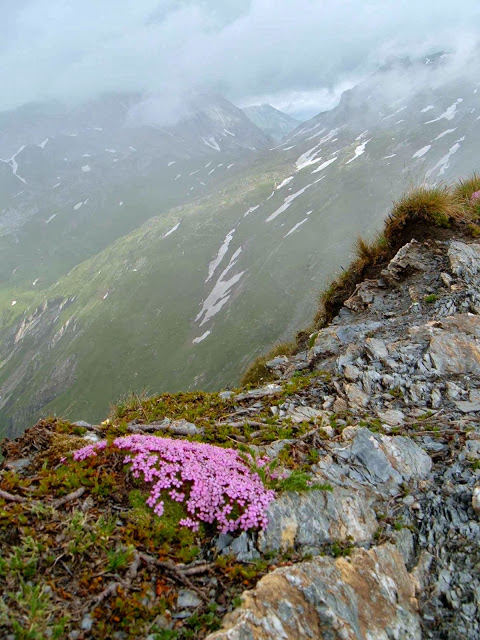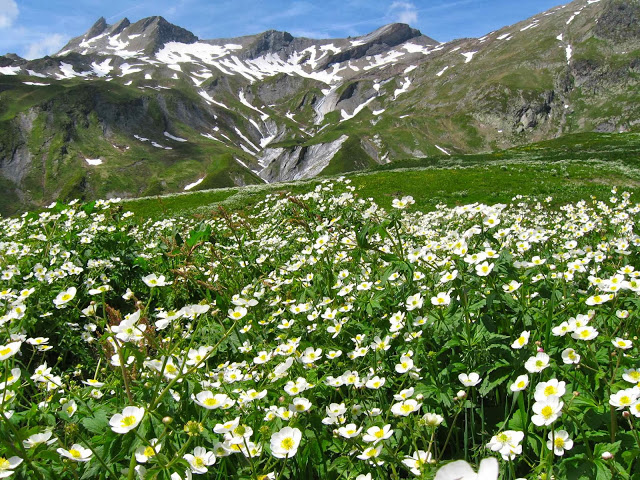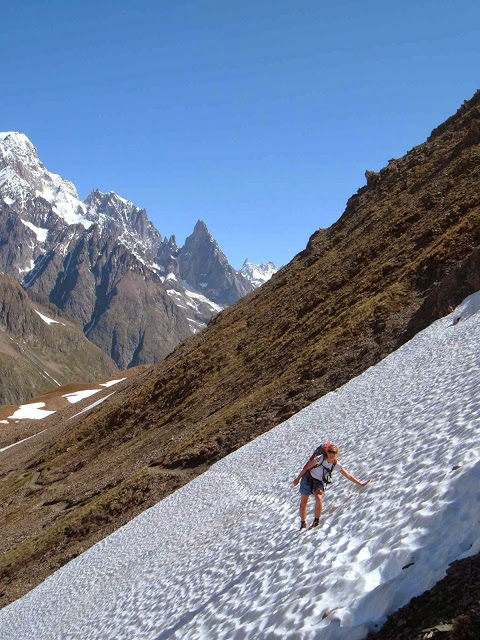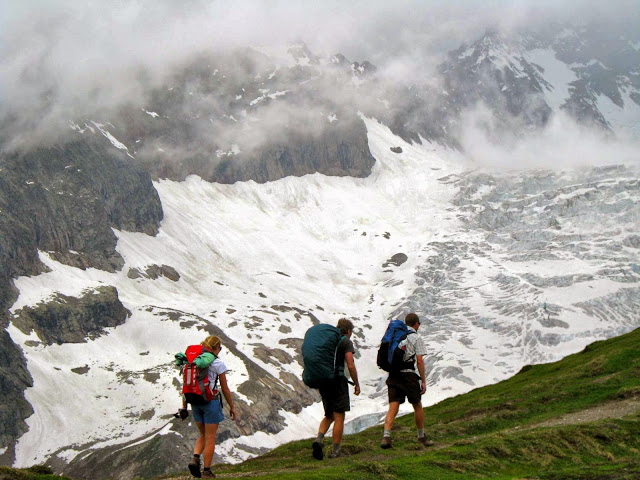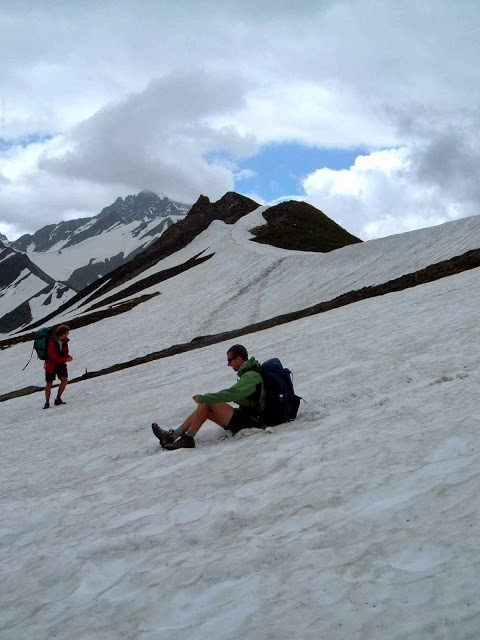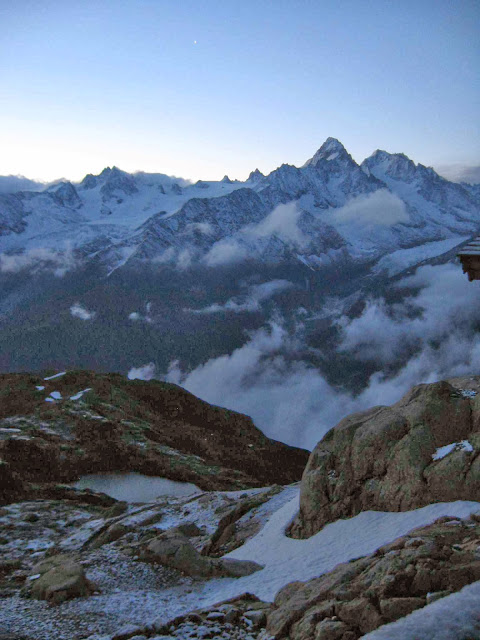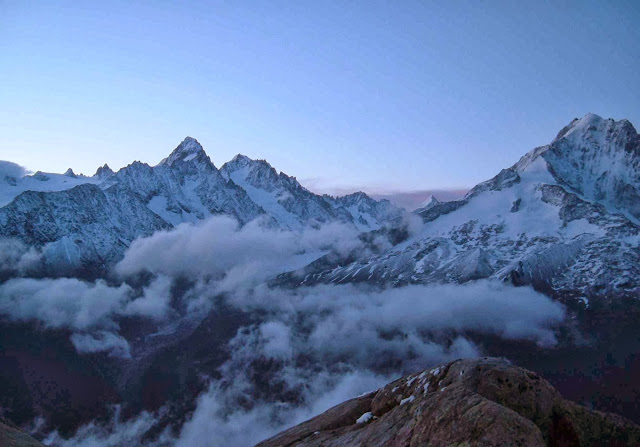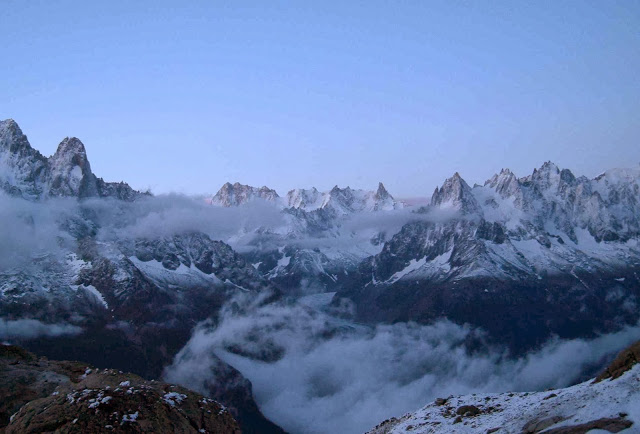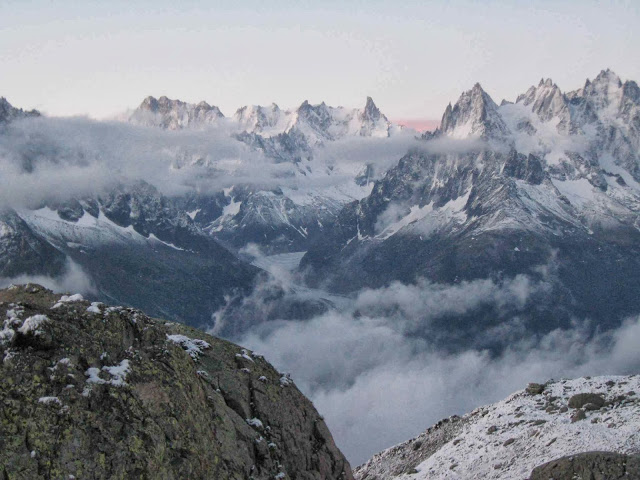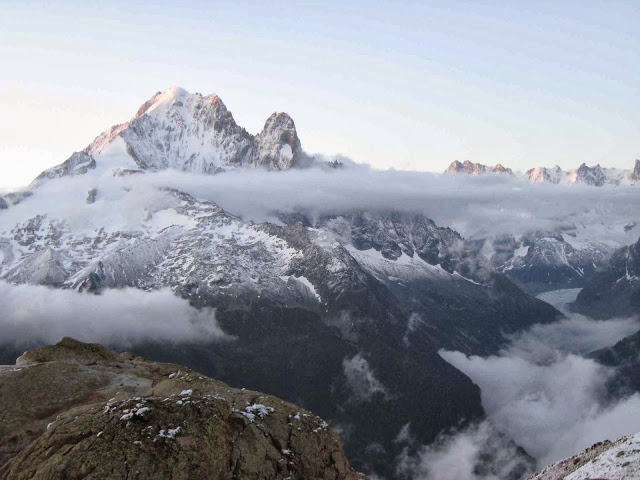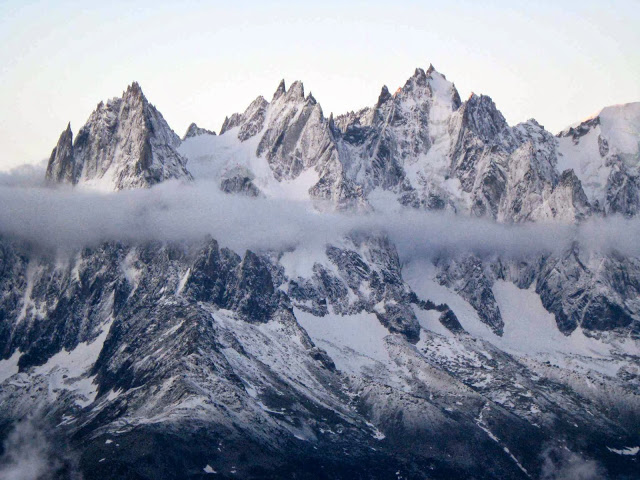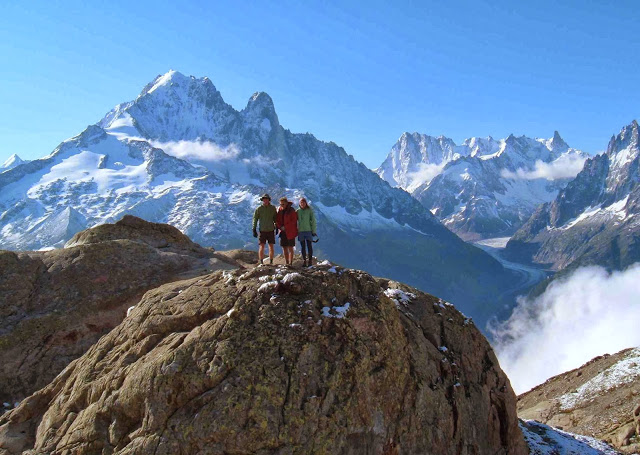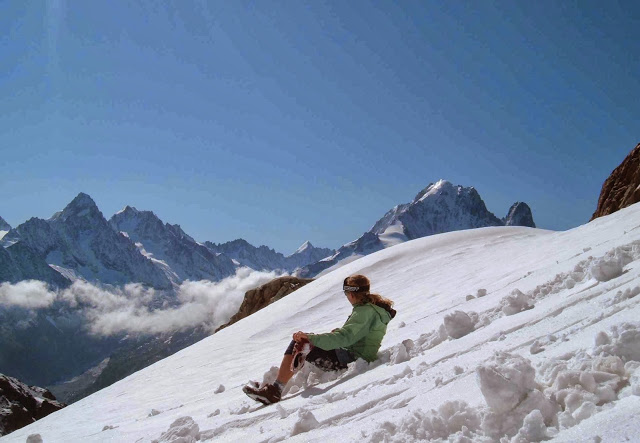FRANCE-SWITZ Haute route: Chamonix to Zermatt 2012 July
The Haute Route from Chamonix to Zermatt is such a classic and famous high-level walk, you would think it would leave an indelible mark on my psyche, would fill me with waves of nostalgia for its beauty as many of the other paths I’ve done have the capacity to do, and yet, there is a certain something that is lacking in my emotional response to this route. It was filled with beauty, indeed, and we met some great people, but I guess the problem is that, unlike on almost every other trail we’ve done, we did not meet anybody at all who was doing our particular version of this route, and the friends that we made were only with us for two to three days at most before our paths diverged – a byproduct of the many options on the haute route. There was no air of shared excitement or pilgrimage; everyone doing it was pretty matter-of-fact about the task. It was just another route. Also, several people had guides, and it seems to be the case that people with guides form their own, closed circle and don’t readily mix with others. I have learned that beautiful scenery is only one of many components of a great walk.
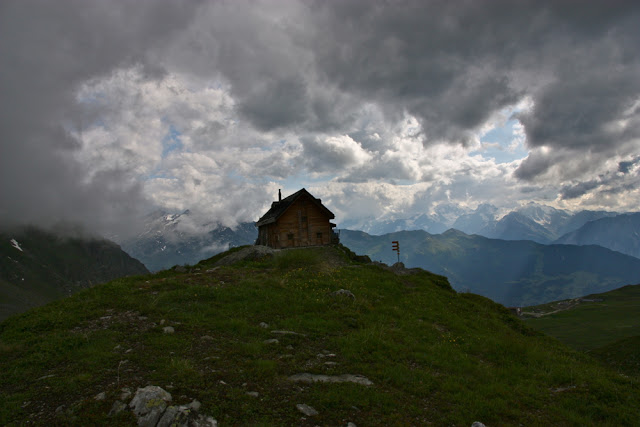 Once we crossed into Switzerland, everything changed. Here is the first hut after the hotels at Champez du lac – Cabane Mont Fort. We felt it looked like something out of a fairytale, perched high there on that hill, and yet it felt strange. Not one person spoke to us. We wondered who was doing our route, as there had been walkers going in every direction from Champez, although nearly all of them were doing the Tour du Mont Blanc. Now our route had its own funnel. The hut was crowded, but we were alone.
Once we crossed into Switzerland, everything changed. Here is the first hut after the hotels at Champez du lac – Cabane Mont Fort. We felt it looked like something out of a fairytale, perched high there on that hill, and yet it felt strange. Not one person spoke to us. We wondered who was doing our route, as there had been walkers going in every direction from Champez, although nearly all of them were doing the Tour du Mont Blanc. Now our route had its own funnel. The hut was crowded, but we were alone.
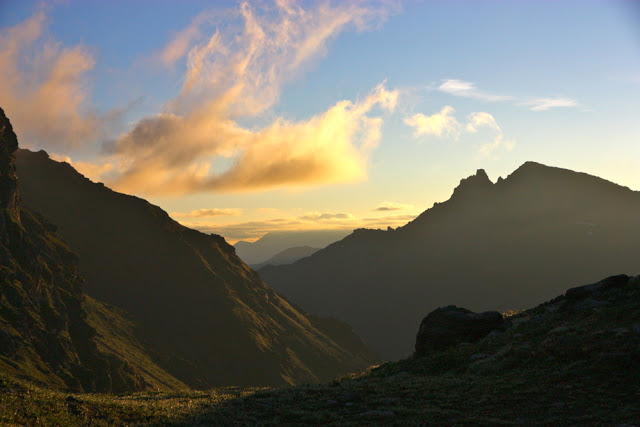
Sunrise from the next hut, Cabane Pflafleuri. We still hadn’t made any friends, or met anyone who was doing the haute route.
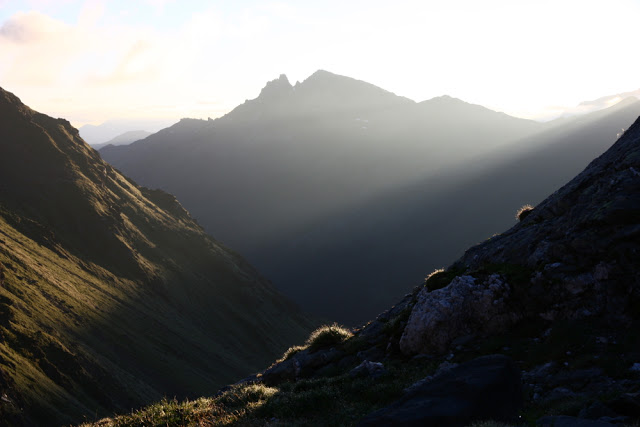 Friends or no friends, the sunrise was beautiful. but the lack of friends made me realise that, much as we think beauty sustains us, we are, au fond, social animals, and beauty combined with meaningful human contact and fellowship is the best recipe for an enjoyable experience. Normally I make heaps of friends in the mountains, so this was a new experience.
Friends or no friends, the sunrise was beautiful. but the lack of friends made me realise that, much as we think beauty sustains us, we are, au fond, social animals, and beauty combined with meaningful human contact and fellowship is the best recipe for an enjoyable experience. Normally I make heaps of friends in the mountains, so this was a new experience.
After Cabane Pflafleuri we climbed up and over the Col des Roux, to emerge at a window revealing this beautiful valley, at the end of which was our next cabane, Cabane des Dix. On the way, we made our first friend, a Parisian, Fabrice. At last there was someone else to share the joy of the journey with, to laugh with and to get to know.
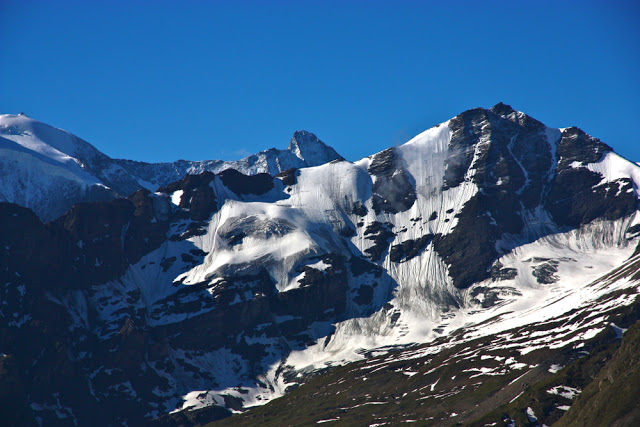 Nearing the cabane des Dix
Nearing the cabane des Dix
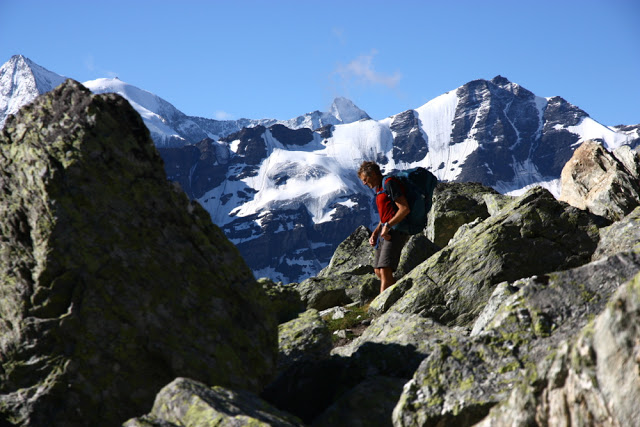 Rugged beauty, but nothing too challenging for a man with Parkinson’s Disease.
Rugged beauty, but nothing too challenging for a man with Parkinson’s Disease.
And there on a rock was the Cabane des Dix.
The beauty thus struck me as a lonely beauty, even though my husband was there with me. On other trails, the beauty remembered as the years go by is one that sits within the context of the camaraderie of the other friends we made doing our route. In addition, we have never found Swiss huts to be as friendly as their French or Italian counterparts, where ad hoc rough and tumble are more the order of the day. We didn’t enjoy the strict regimentation that came with the world of Swiss mountaineering, being told exactly which bed to sleep in, which table to eat at, and being rationed out one pat of butter, one tiny packet of jam and two slices of stale bread to furnish us for a hefty day’s hiking. The bread is always stale in mountain huts, but at least in most places it is plentiful
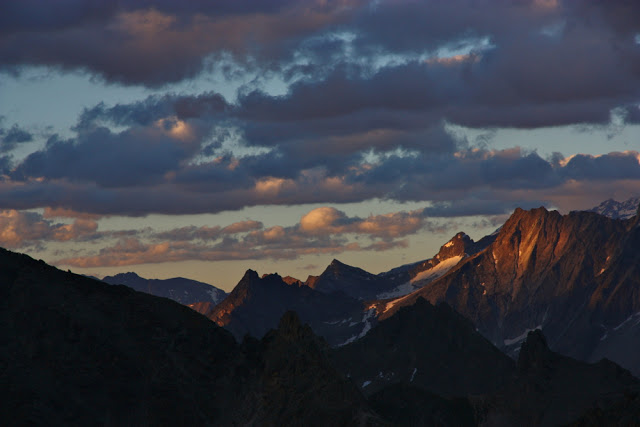 Sunset that night was a treat.
Sunset that night was a treat.
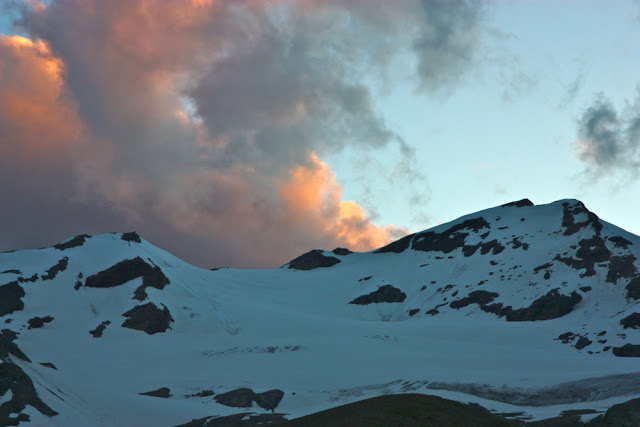
At breakfast, Fabrice ran into trouble with the gardien. He didn’t want one sachet of instant coffee for breakfast; neither did he want one tea bag. He requested hot chocolate instead (like I had somehow received, also refusing the other two items). He was told chocolate is only for children (me?) and that he had to imbibe an adult’s drink. He was not amused. We chewed our stale bread in discontent.
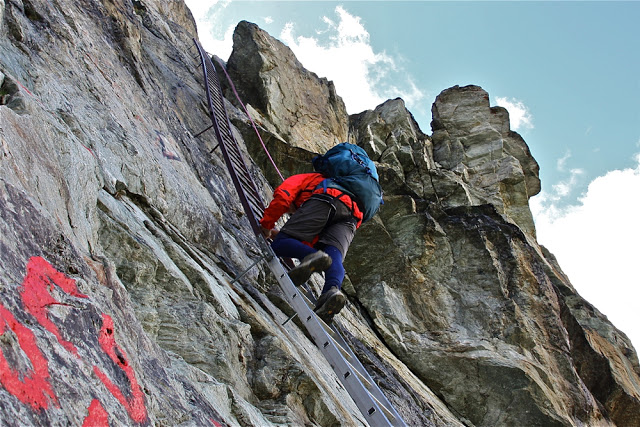 After the Cabane des Dix, you have a choice of two passes, both of which contain elements of risk and danger. One has loose stones with a big drop off. The other has monstrous ladders reaching into the sky. I wanted to take the latter, but had decided to take my husband down to the valley first, as neither pass was suitable for him. British climbers overheard this, and came up to me and offered to rope Bruce up, if I could get him over the glacier and the ice bridge with mini-chasm below it first. We set out ahead of them to enable this, and there was Fabrice, who also wanted to come with us. We appreciated his company as much as he did ours. This is a pass that is better negotiated in company than solo!! We were there waiting for the Brits (I think that surprised them), who roped Bruce up. He bounced up the ladders like an adept monkey: all he needed was the confidence to know that if he fell, he wouldn’t die, and, knowing that, of course he didn’t fall.
After the Cabane des Dix, you have a choice of two passes, both of which contain elements of risk and danger. One has loose stones with a big drop off. The other has monstrous ladders reaching into the sky. I wanted to take the latter, but had decided to take my husband down to the valley first, as neither pass was suitable for him. British climbers overheard this, and came up to me and offered to rope Bruce up, if I could get him over the glacier and the ice bridge with mini-chasm below it first. We set out ahead of them to enable this, and there was Fabrice, who also wanted to come with us. We appreciated his company as much as he did ours. This is a pass that is better negotiated in company than solo!! We were there waiting for the Brits (I think that surprised them), who roped Bruce up. He bounced up the ladders like an adept monkey: all he needed was the confidence to know that if he fell, he wouldn’t die, and, knowing that, of course he didn’t fall.
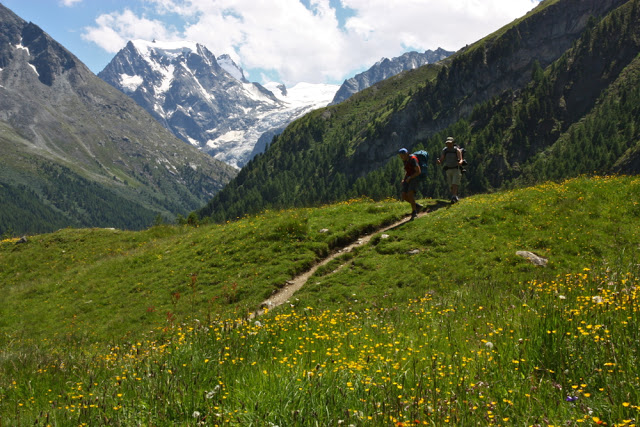 Approaching lac bleu with Fabrice
Approaching lac bleu with Fabrice
Fabrice wanted to visit lac bleu, reputedly very beautiful. I had been unsure, as it is on a chemin difficile. However, we were enjoying his company, so put lac bleu on the list, and brought our accommodation forward a bit so as to spend the time in his company (we never make bookings). Our paths would diverge next day, when we went back up to high ground, and Fabrice stayed low. It was sad parting. We’d had fun. I can still hear him at times telling me not to tread on the beautiful flowers in the field (when there was nowhere else to tread). I love a man who cares that much about flowers.
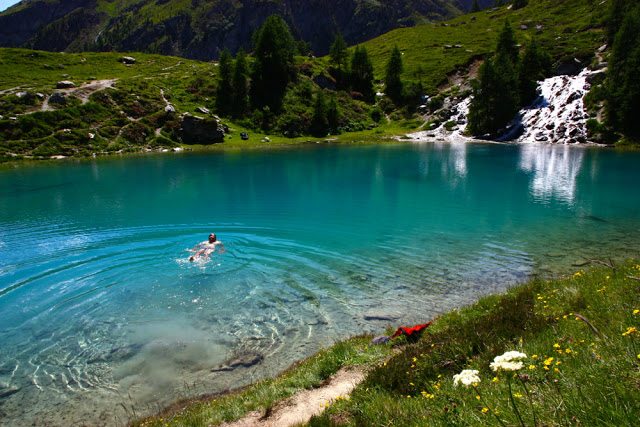 Bruce swimming in the freezing lake.
Bruce swimming in the freezing lake.
The next day we climbed back up into the snowy stuff again. The hut we had chosen was higher than on the official route, but we wanted to be there as the views were said to be good. It was truly amazing. Below is Bruce in the early stage of the climb.
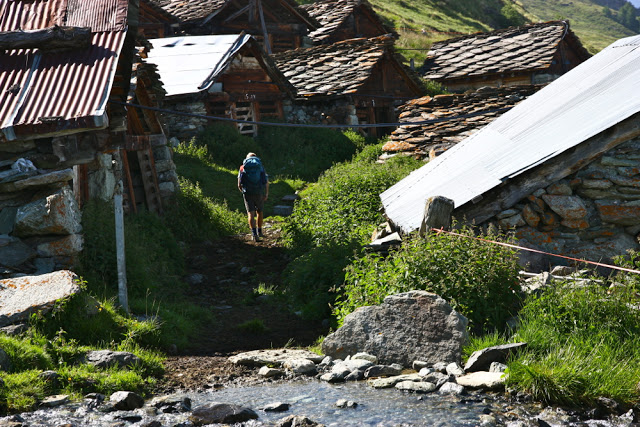 And below again, he is sitting looking out at the most amazing view I have ever seen from a hut. This hut sold nice cakes, and we had a tasty dinner, even if we were told exactly where we had to sit and with whom we were permitted to talk.
And below again, he is sitting looking out at the most amazing view I have ever seen from a hut. This hut sold nice cakes, and we had a tasty dinner, even if we were told exactly where we had to sit and with whom we were permitted to talk.
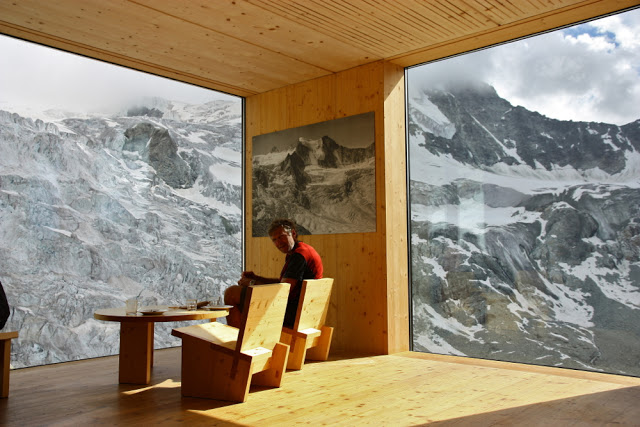 Cabane de Moiry
Cabane de Moiry
Sunset was pretty spiffy
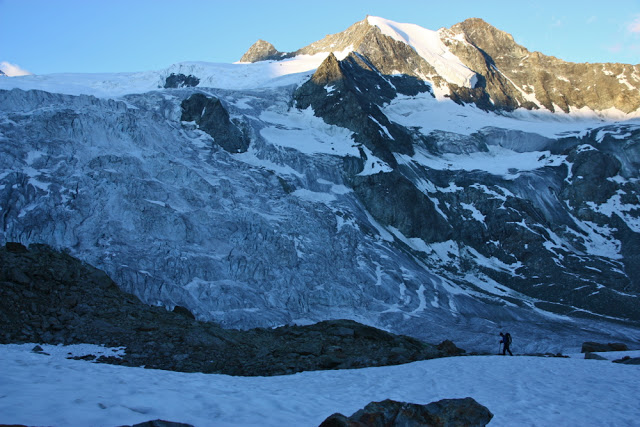
Early next morning, I was up, as usual, to photograph whatever there was to see. Lots of climbers were setting off already.
Leaving this hut next morning, I had one of my less happy experiences of the trip. We had to cross a band of ice about 20 cms wide, with a big drop into frozen realms below. I got Bruce to wear our one pair of crampons, so I was in shoes with little grip, and carrying his pack which is way too big and which threw me off balance a little as my back is very small, so it came down and bashed my legs. I didn’t have it done up in case I fell into the lake below and needed to rid myself of it, so it swayed around and the ice was slippery. I was shaking when I’d finished this bit.
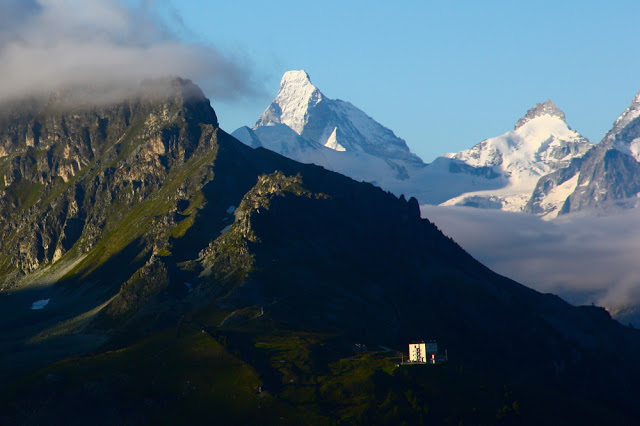
View from the cabane Bella Tola, two nights later
Down we went to a dam where the lady didn’t want to serve us. There we met our second friend on this trail, who was also denied service. I can’t remember why. Perhaps we were not there in regulation hours. Somewhat hungry, the three of us set out up the steep pass, each at our own speed. I like to treat a mountain pass as a decent workout. It can be cold waiting in the wind at the top, but I just can’t resist a nice fast climb. When Bruce joined me, our new friend was a speck in the distance, and I was frozen, so we didn’t wait, and plummeted down to the valley (Zinal) where we were staying the night. I think that’s another reason why this route doesn’t thrill me as much as many others. Too many nights were spent in hotels (very nice ones) in valleys rather than in huts high in the mountains, which is where I want to be. Mostly, we were high in the middle of the day, and down low for the part of the day that matters. I’d prefer it in reverse, but it wasn’t possible, as the huts weren’t there.
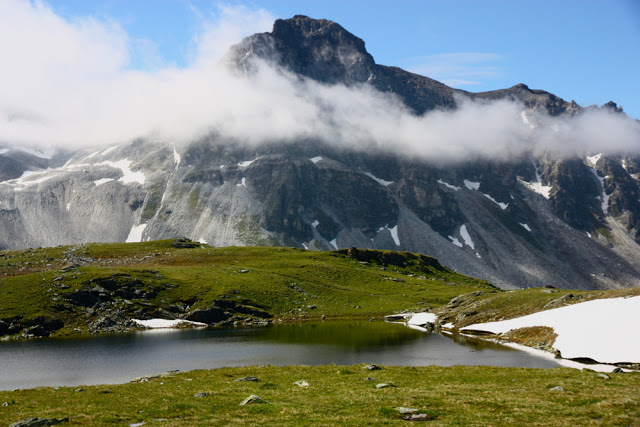
Climbing toward Meidpass
The towns at the bottom are quite small by town standard, but big enough to lose friends in. We didn’t see the friend we’d made until the next day, after he’d finished and was hiking without his pack just to finish things off. It seemed a rare thing to be doing the whole route.
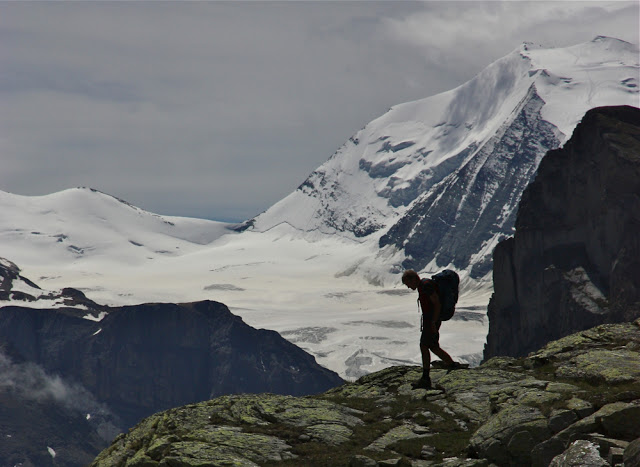
Bruce near the Weisshorn on our descent to Gruben for another valley sleep. The weather was changing. I didn’t take any photos at all in the final stages of the trip, as clouds closed in, and there was no point taking photos of Zermatt in anything other than ideal conditions. I used to live and train there each year during racing season. I have myriad photos of the town dressed for the ball.
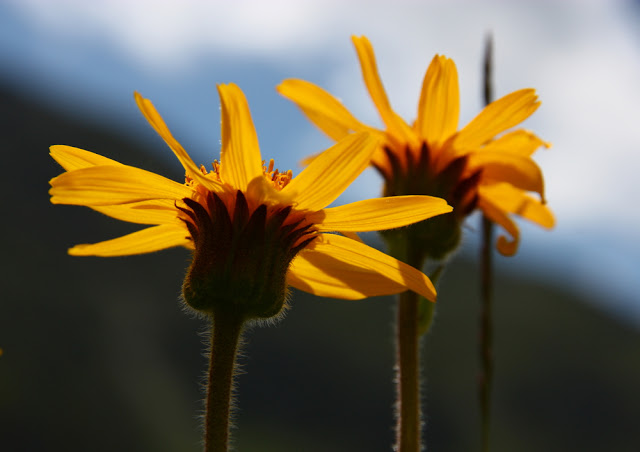 Senecio doronicum
Senecio doronicum
Flowers in the fields near Cabane Bella Tola. The flowers between Zinal and Zermatt were numerous and glorious. By then, the route had dropped out of the rock and snow and was primarily in the high pastures.
It was fun for me to walk part of the Sierre-Zinal race that I used to compete in – run in a daze reading my body and the bodies of my competitors, concentrating hard, monitoring breathing and energy. Now I could just relax and sniff the flowers and enjoy things at a more leisurely pace.
Alas, Zermatt and Taeschtal were anticlimaxes for me, as I knew them so well, and they were drab in that grey outfit they chose for our arrival. No matter. The point for us hadn’t been the arrival at the end, it had been the journey, and we had seen many wonderful mountain sights.
